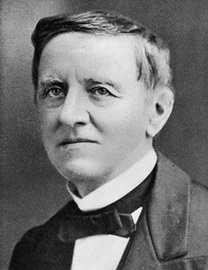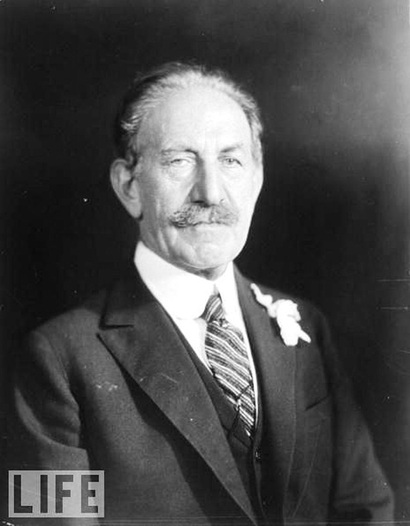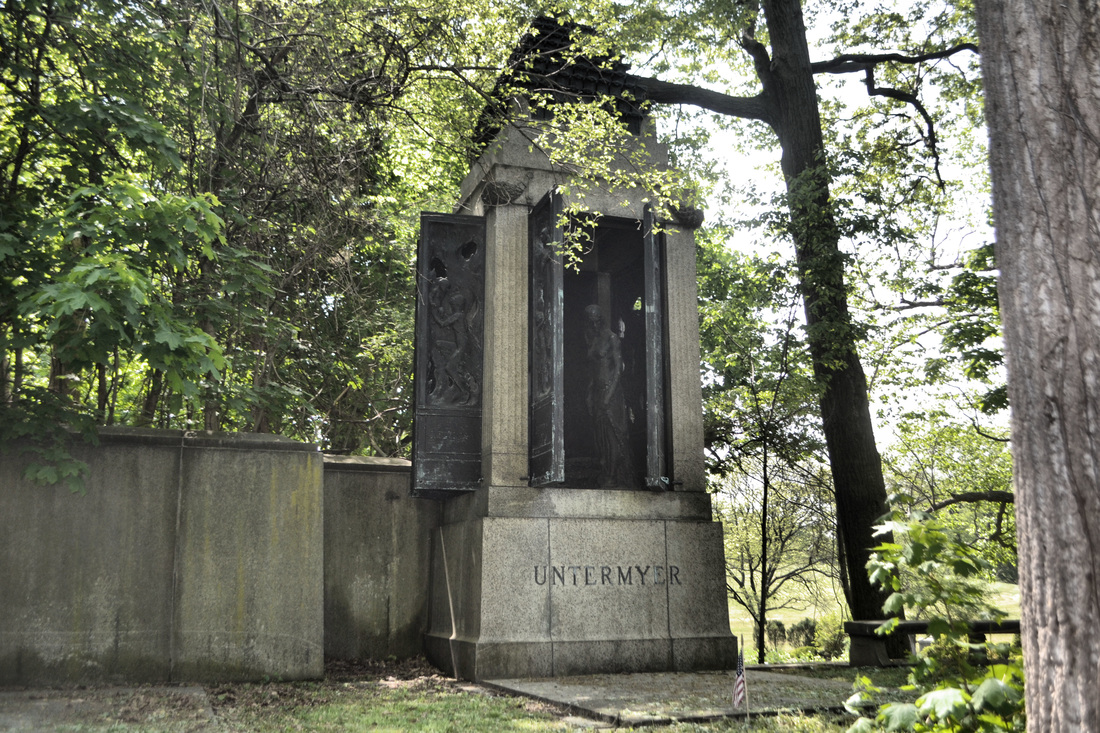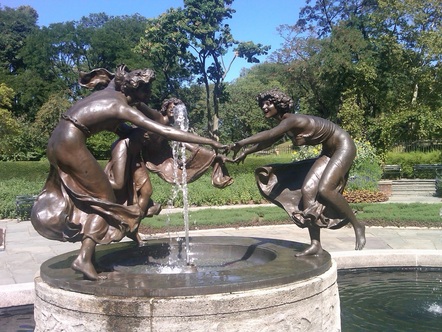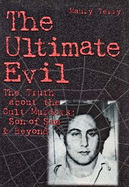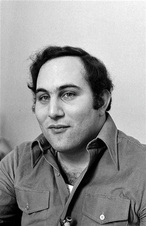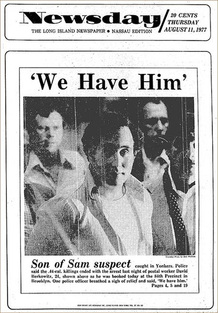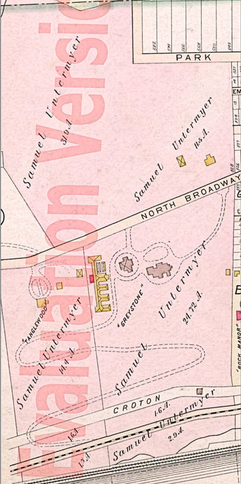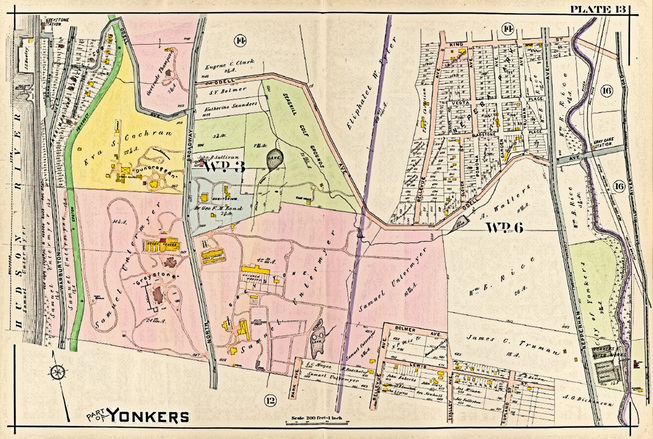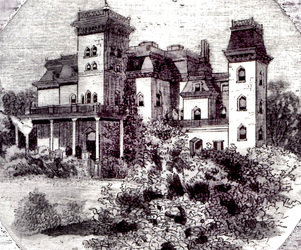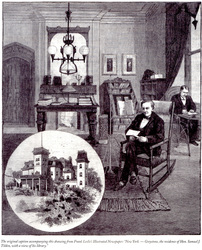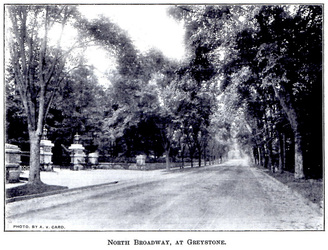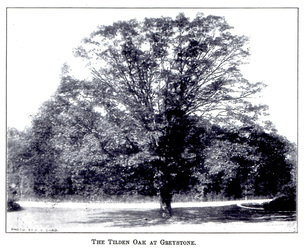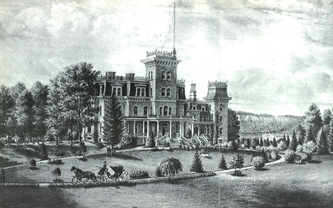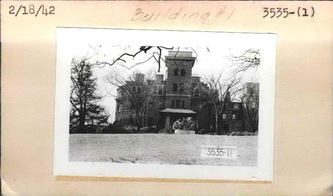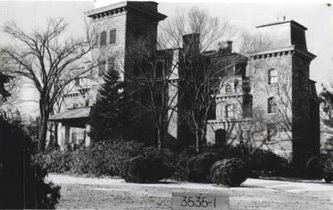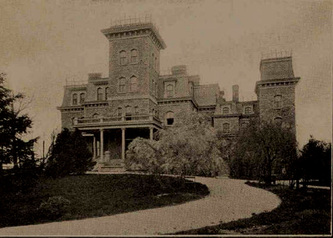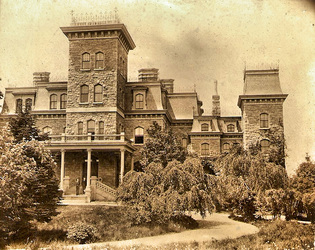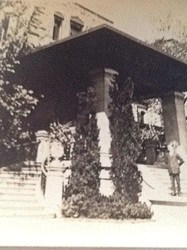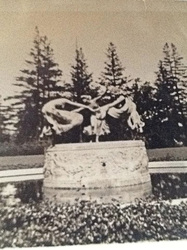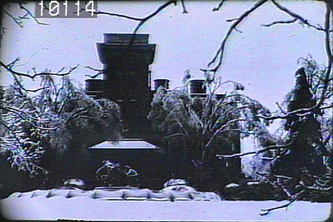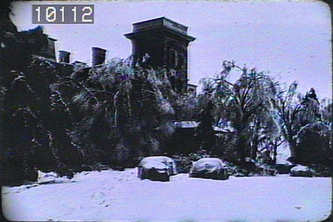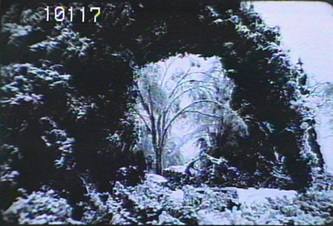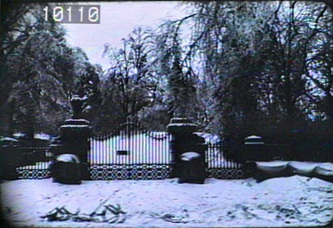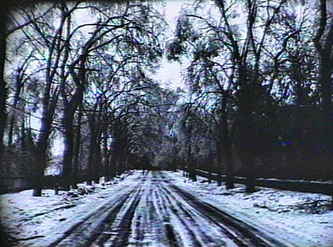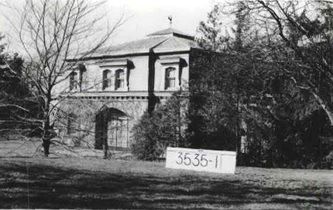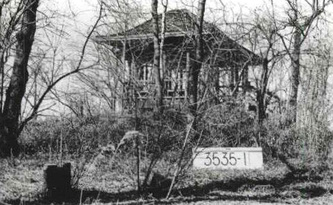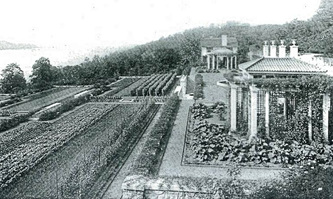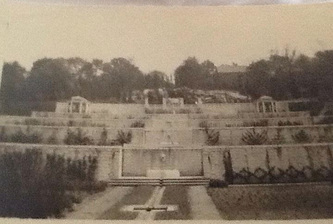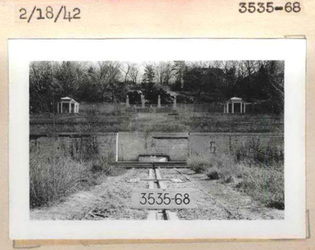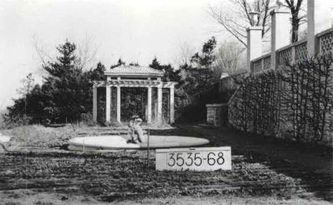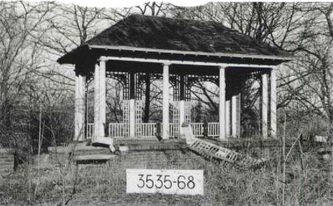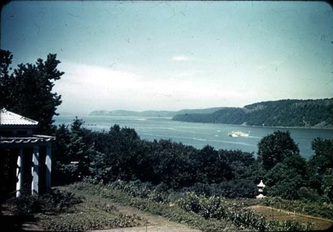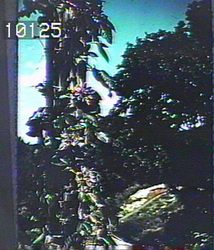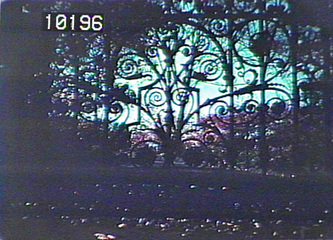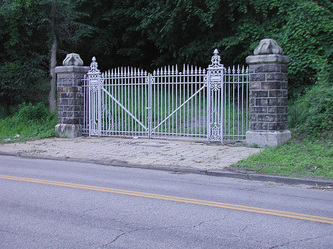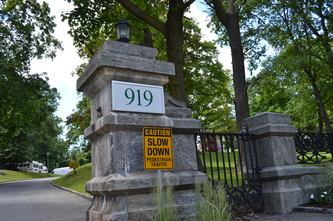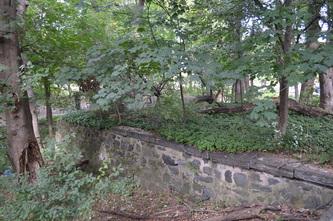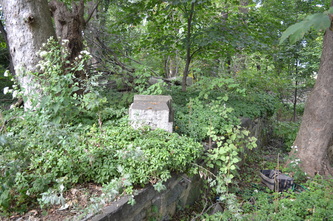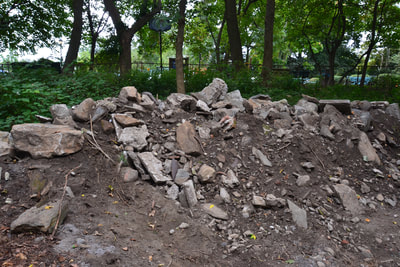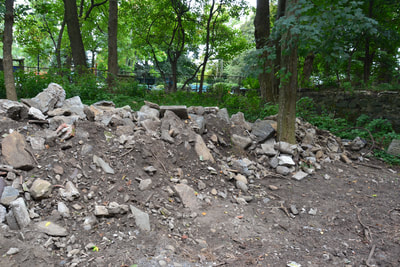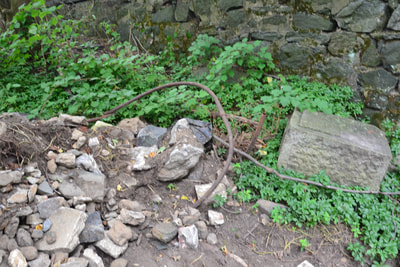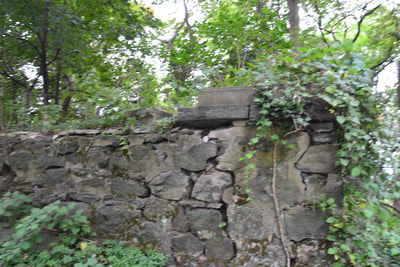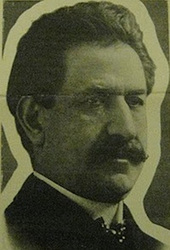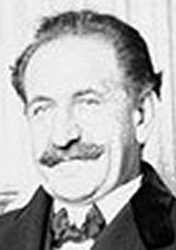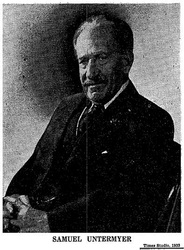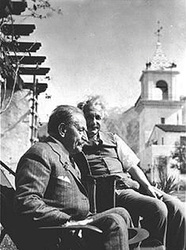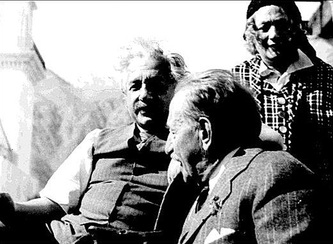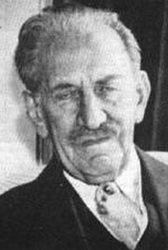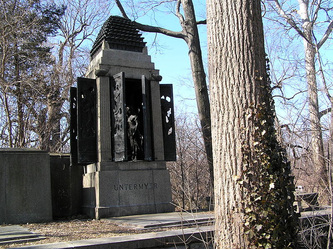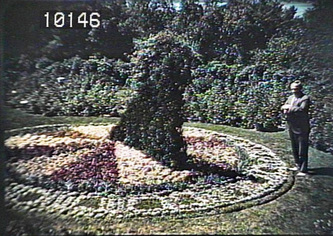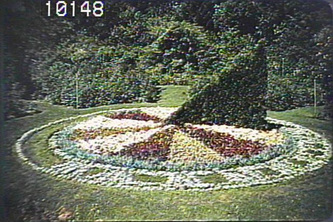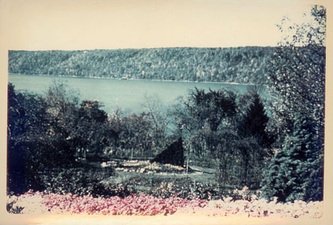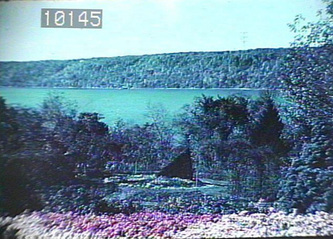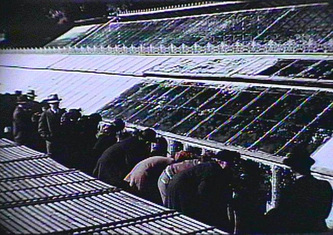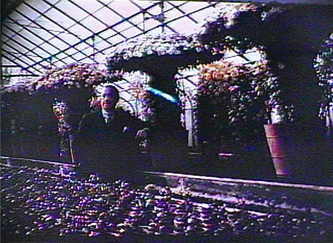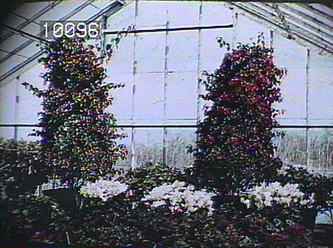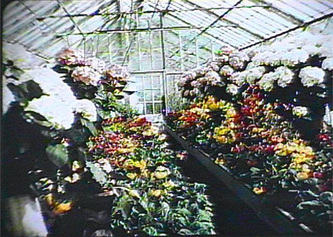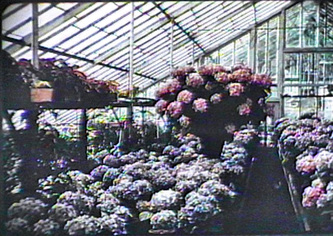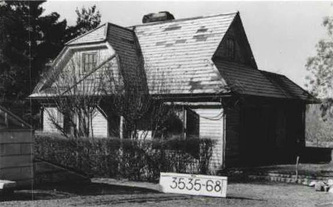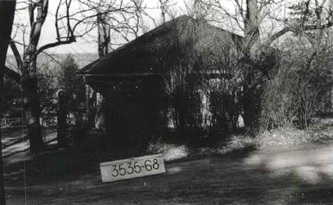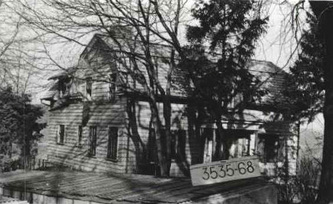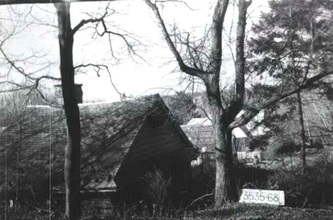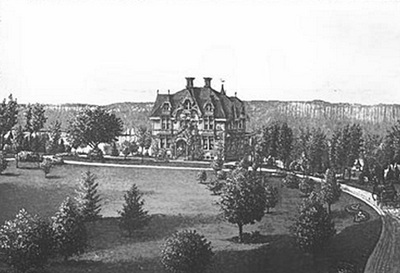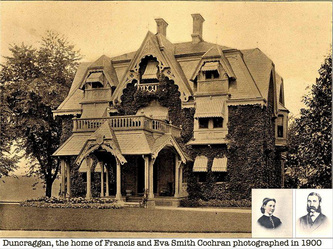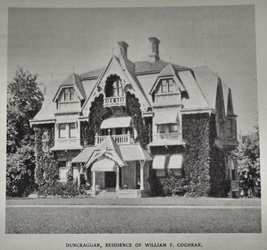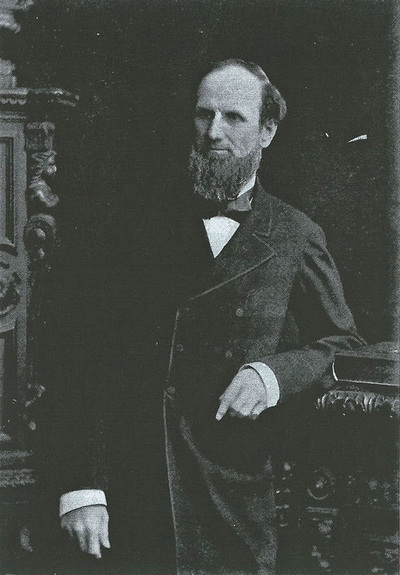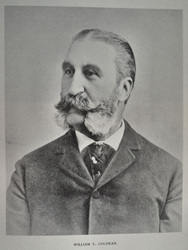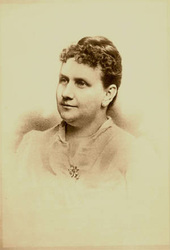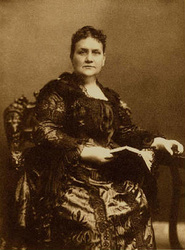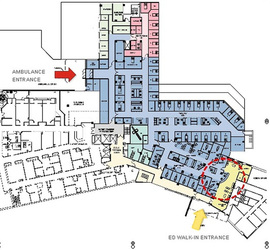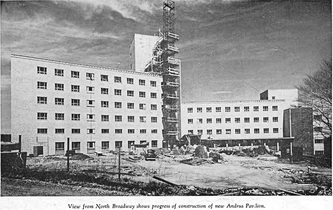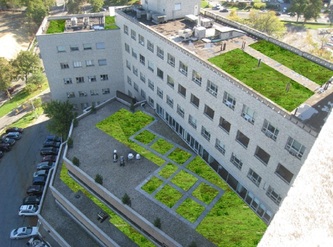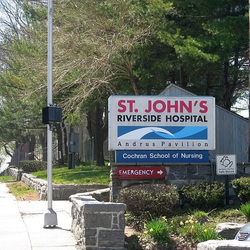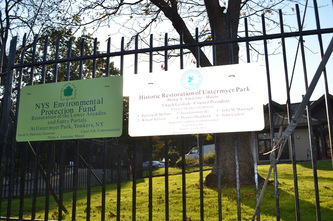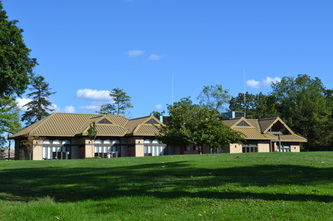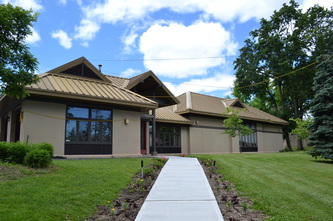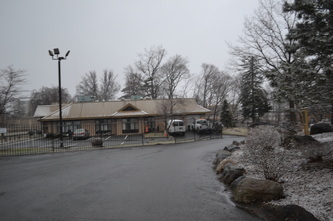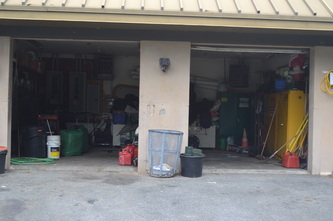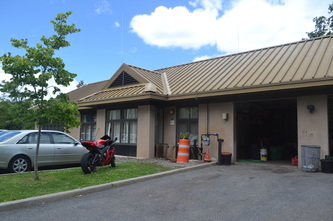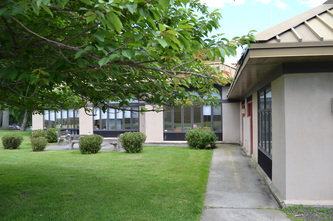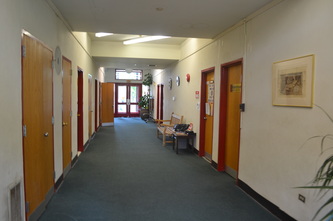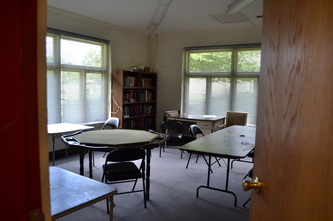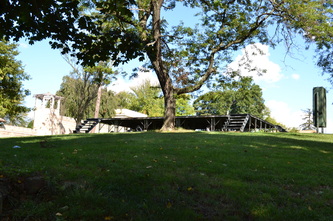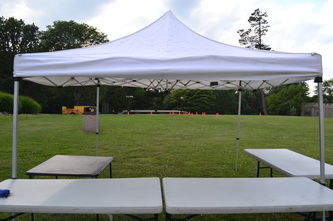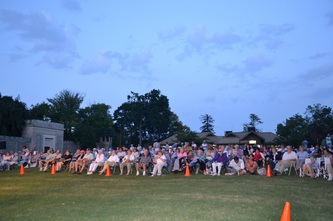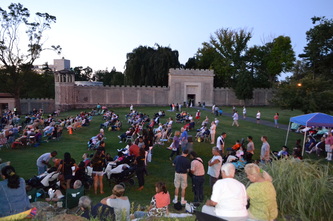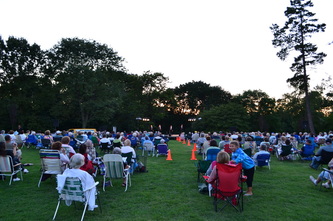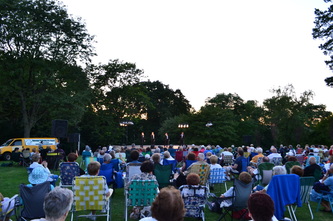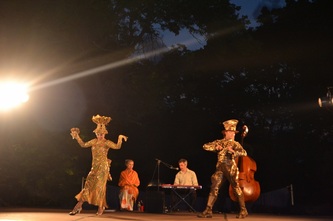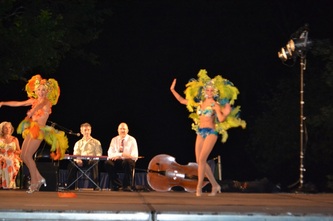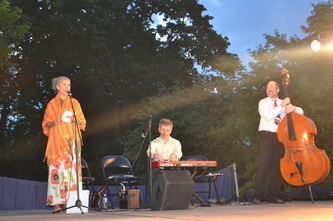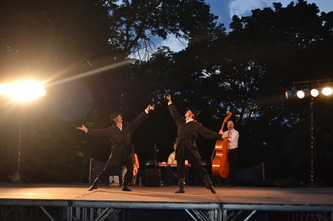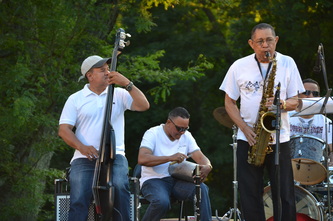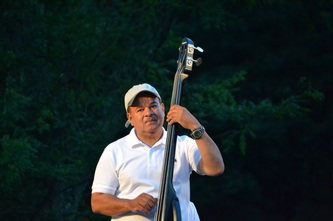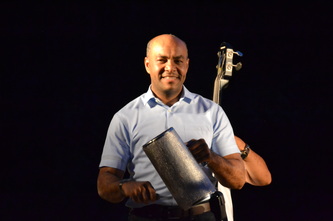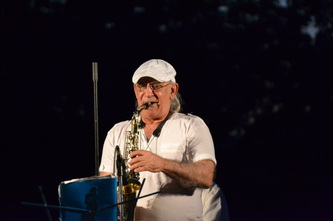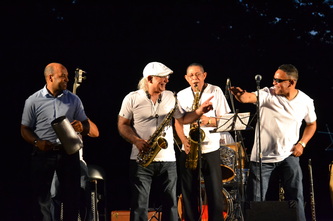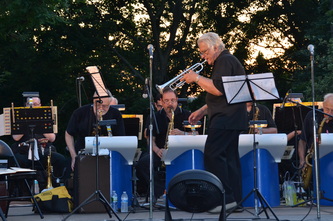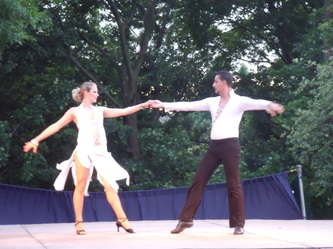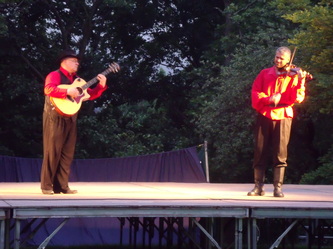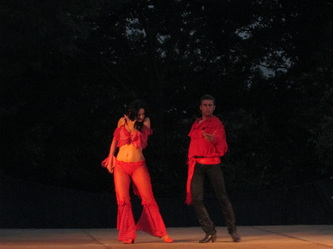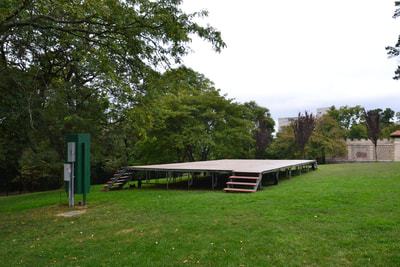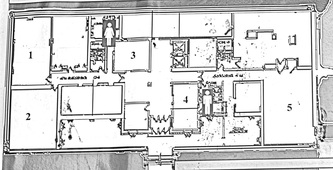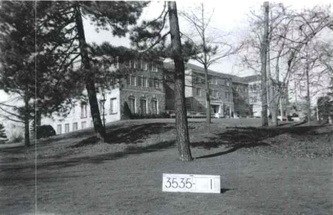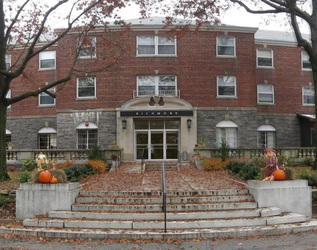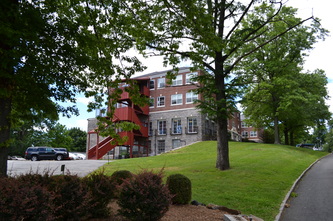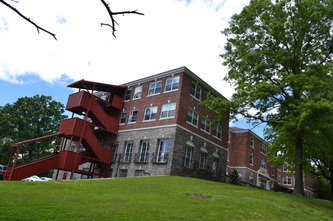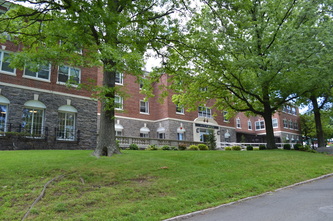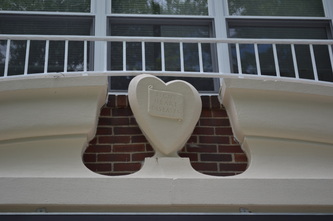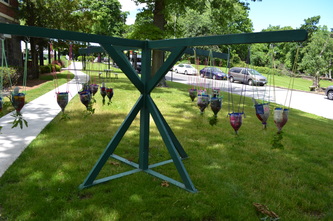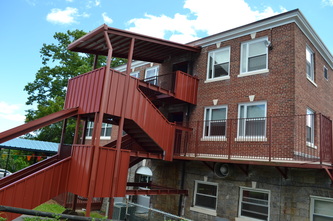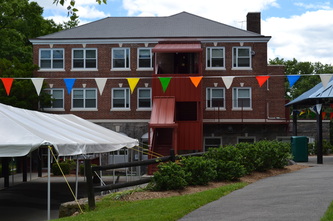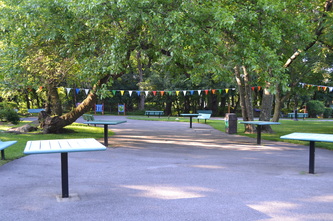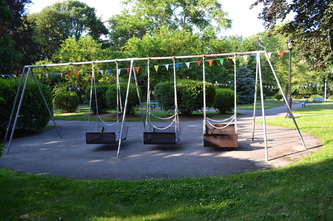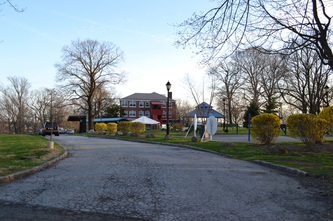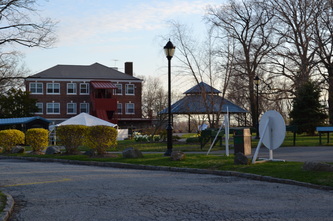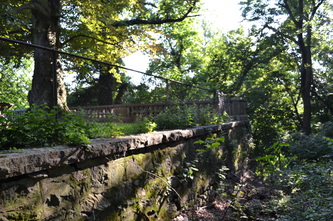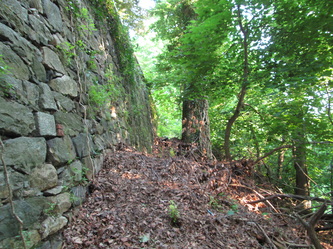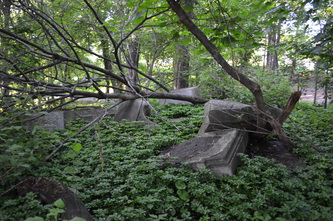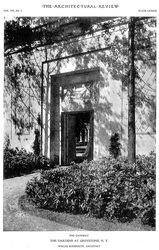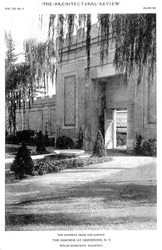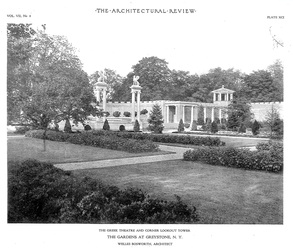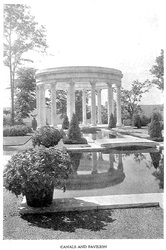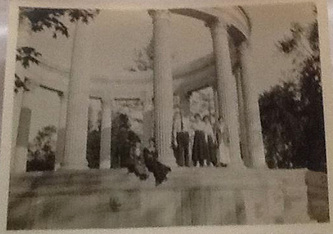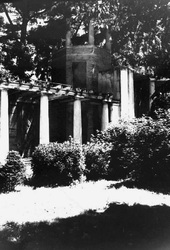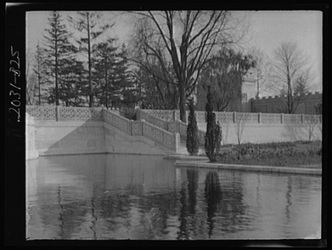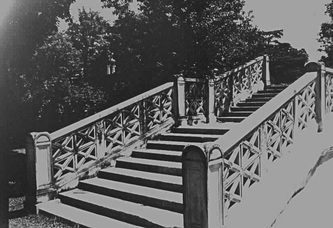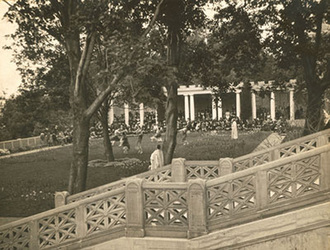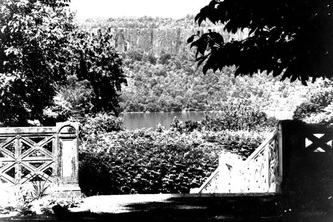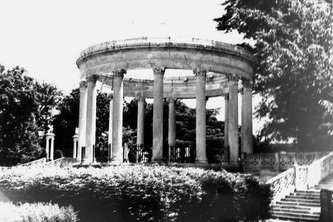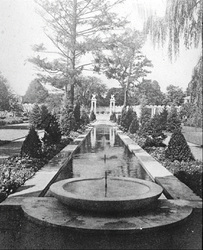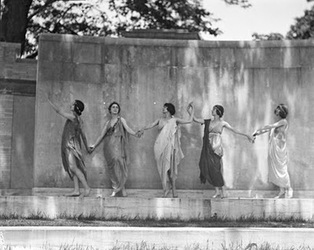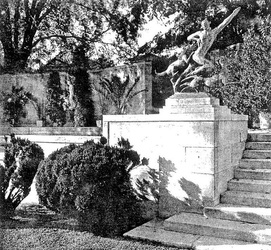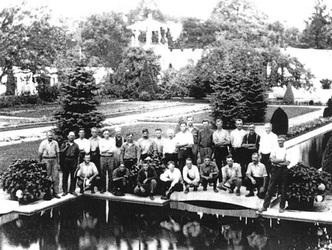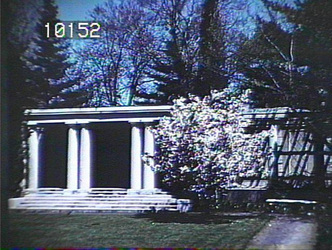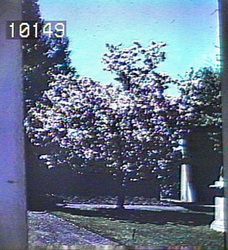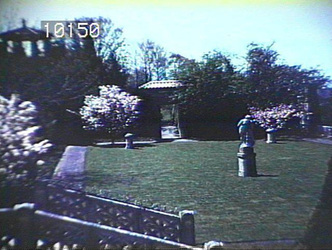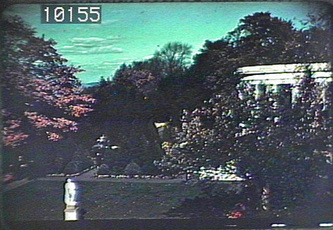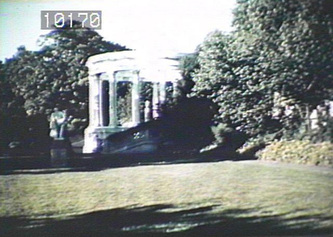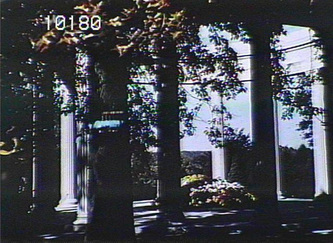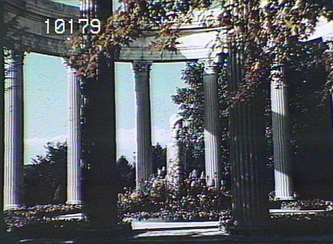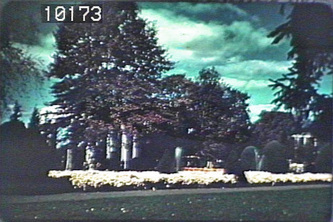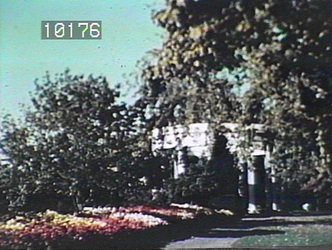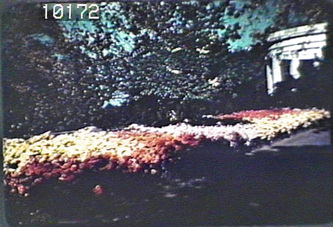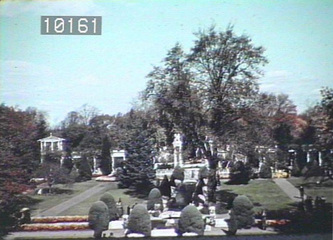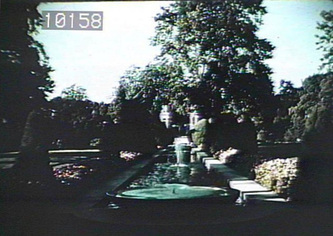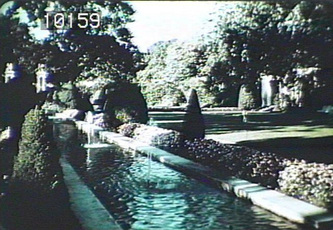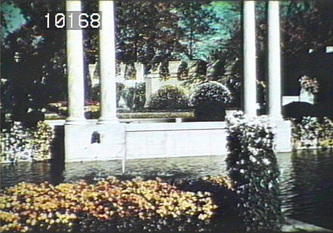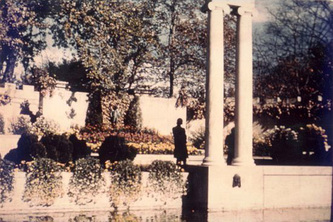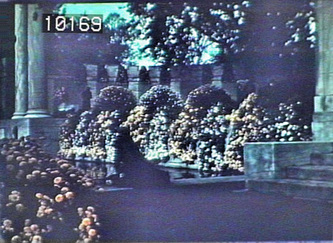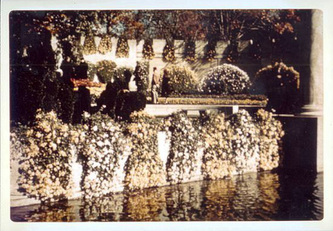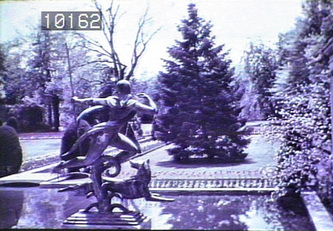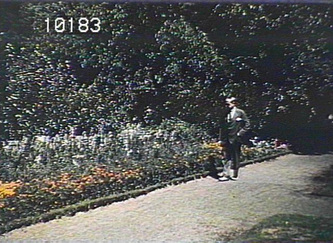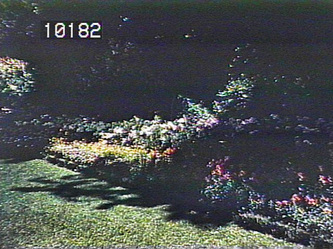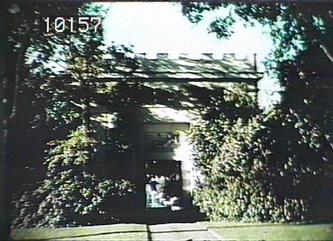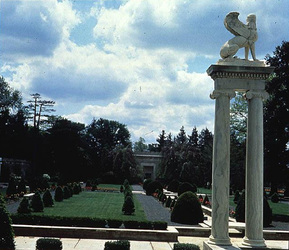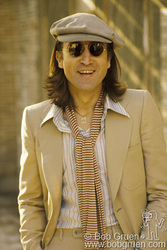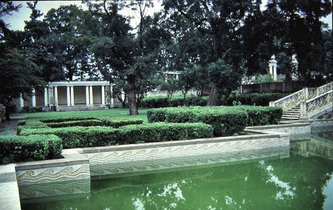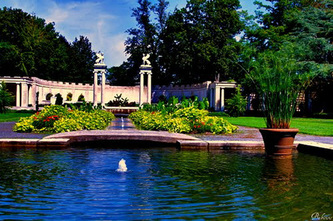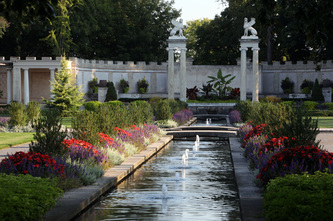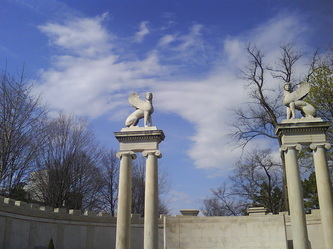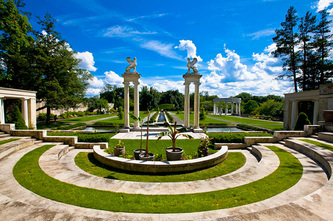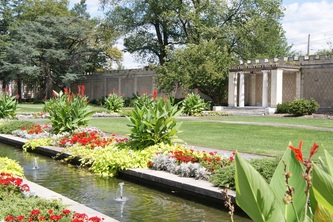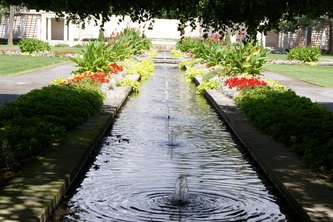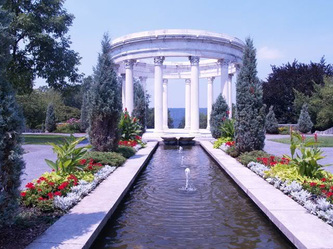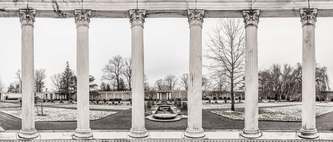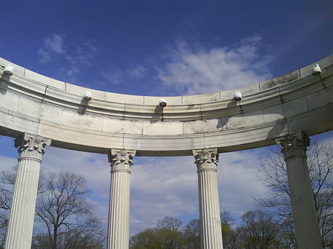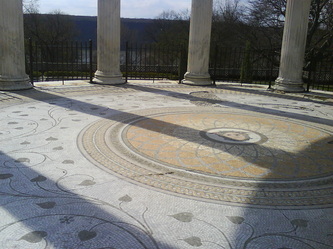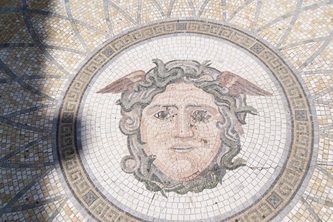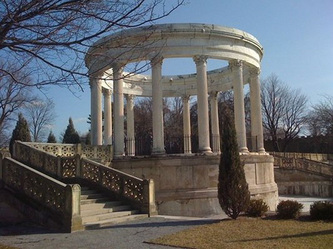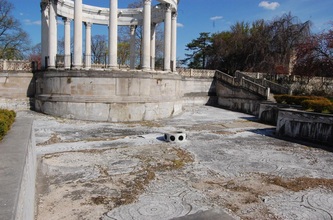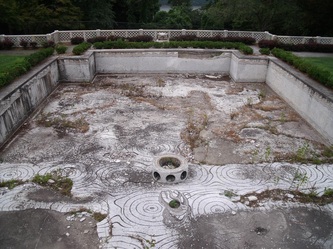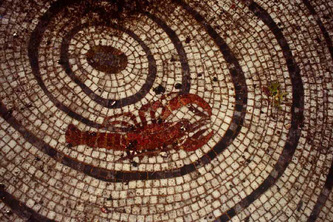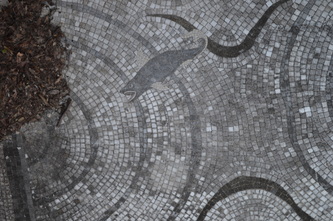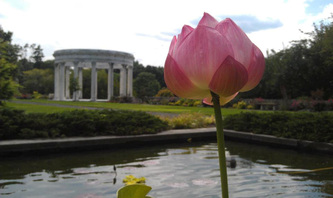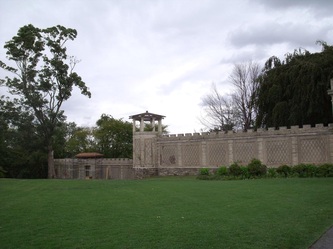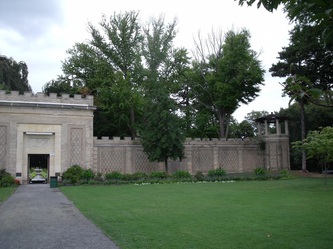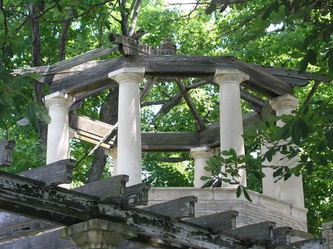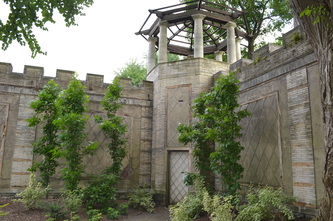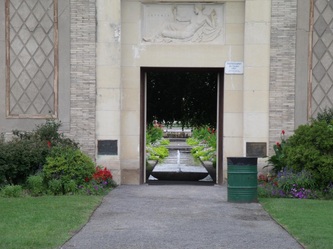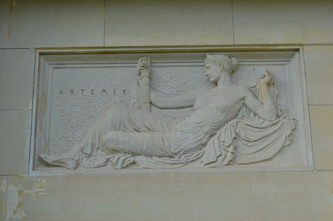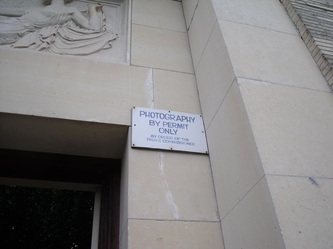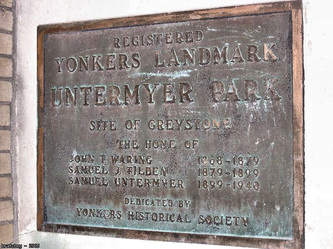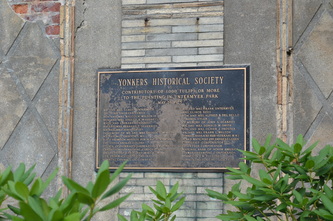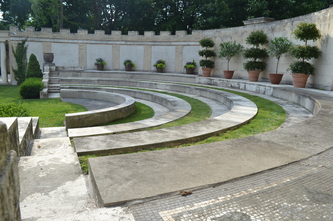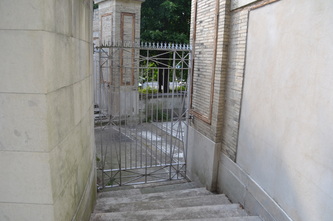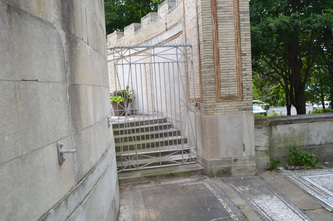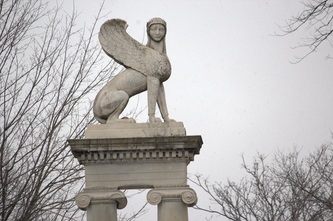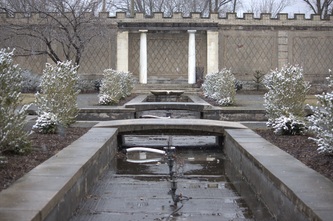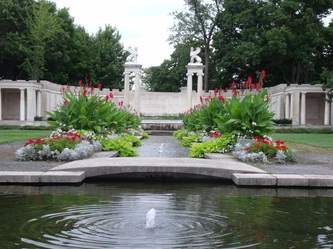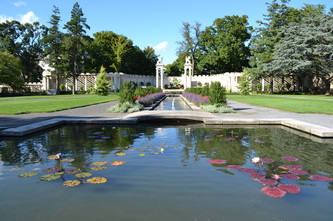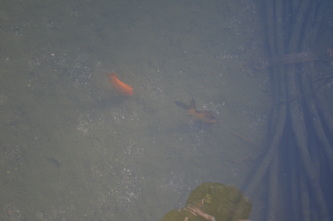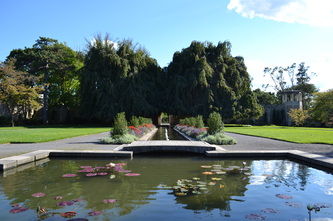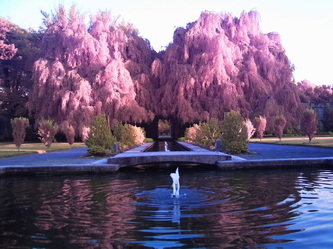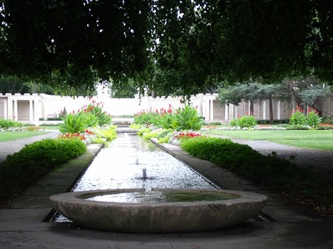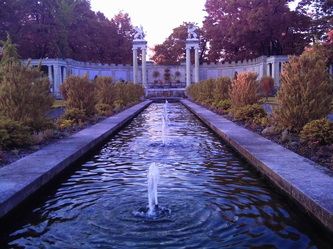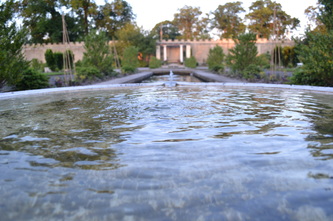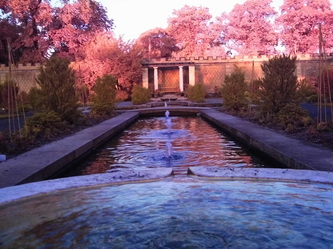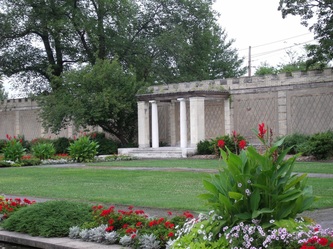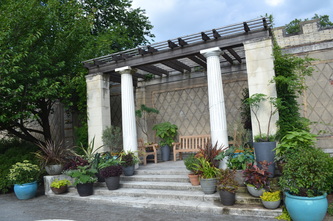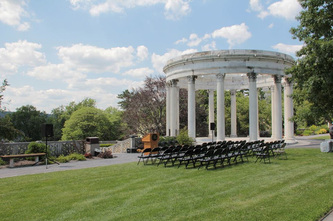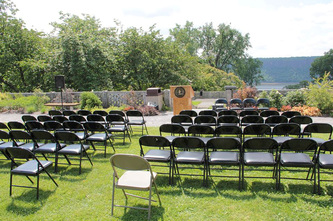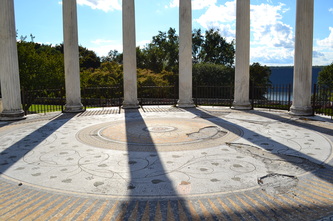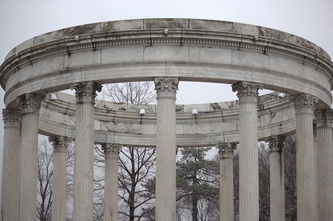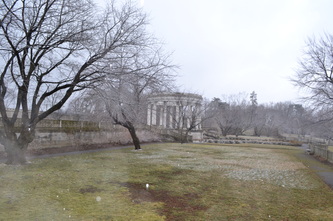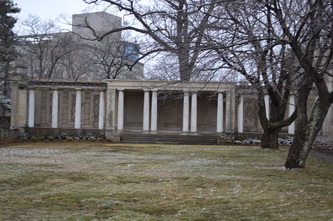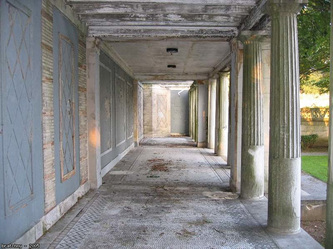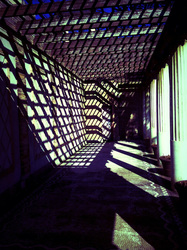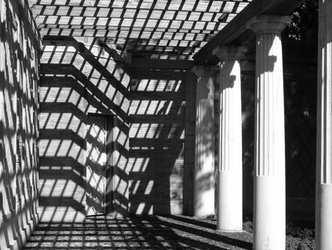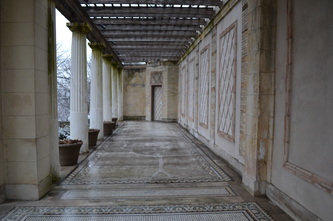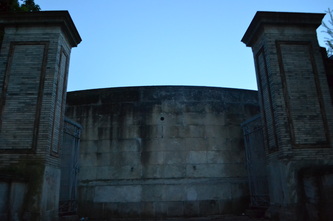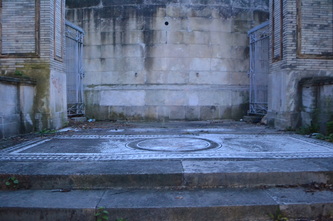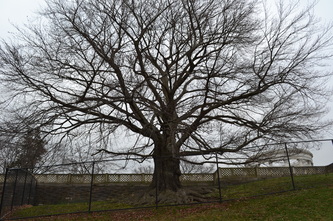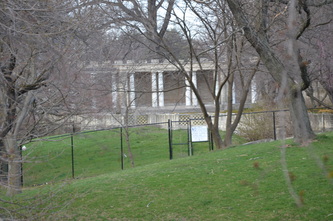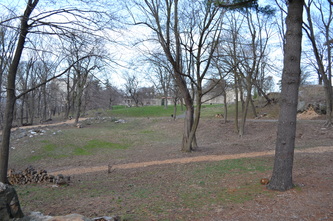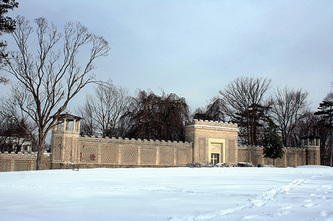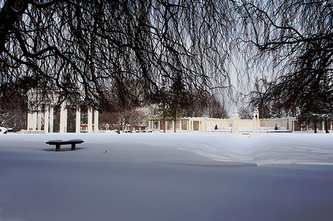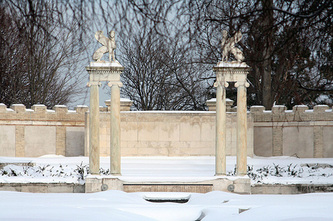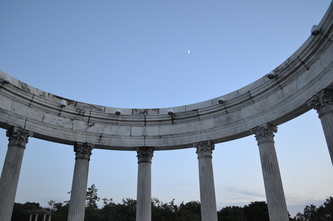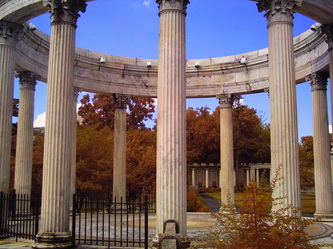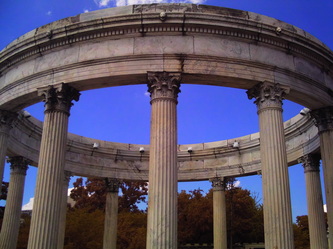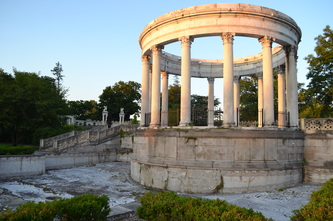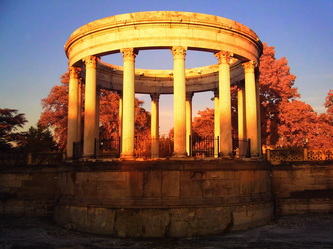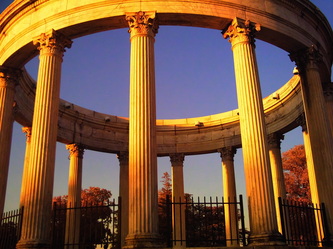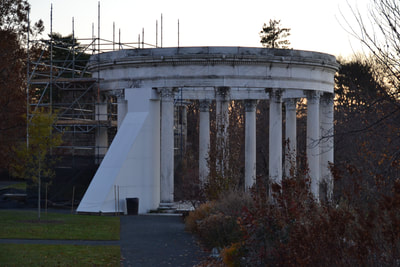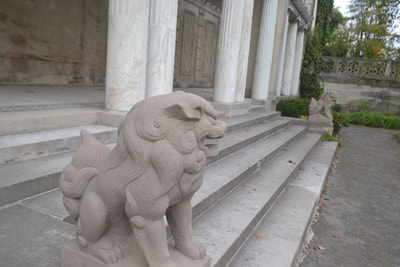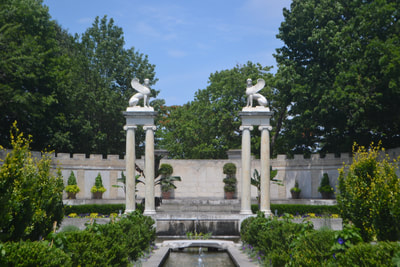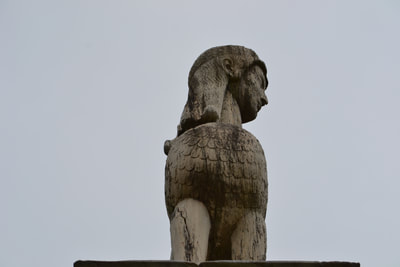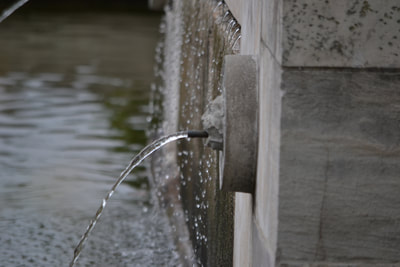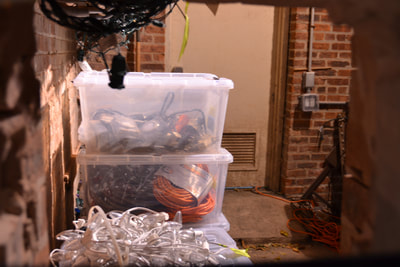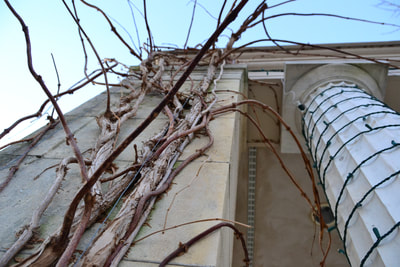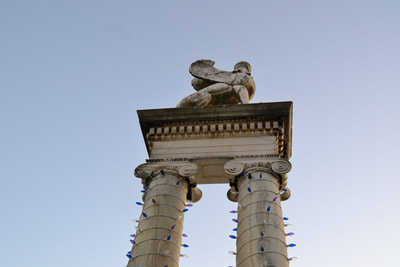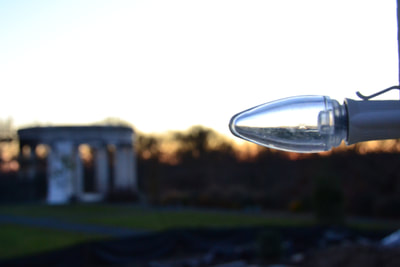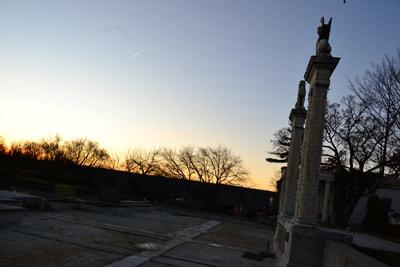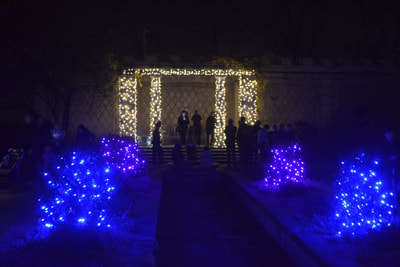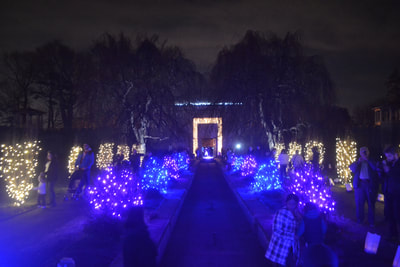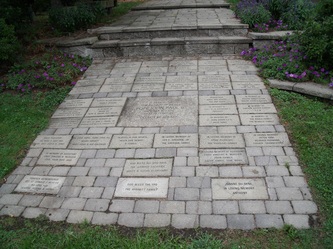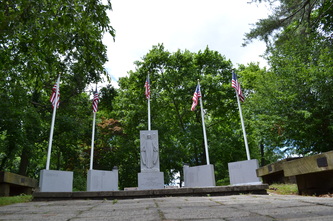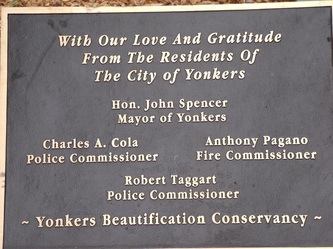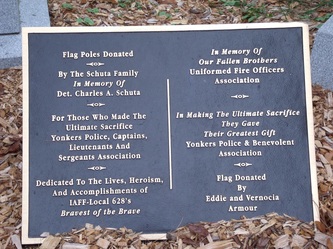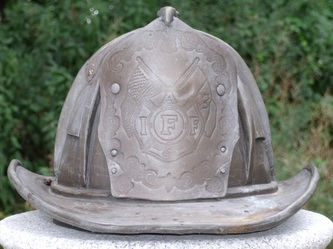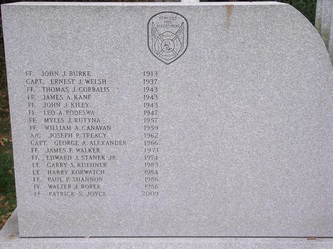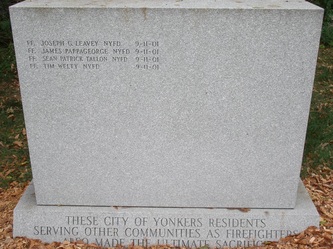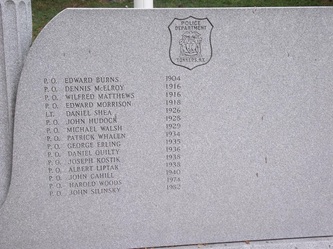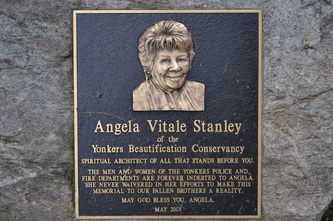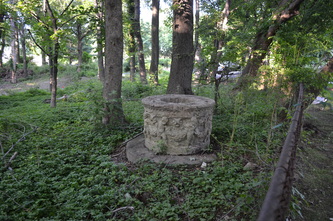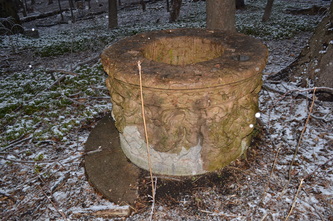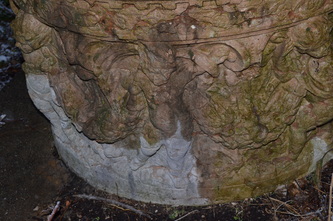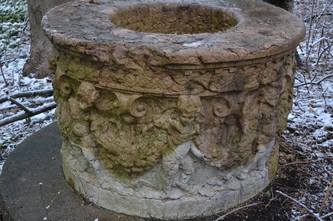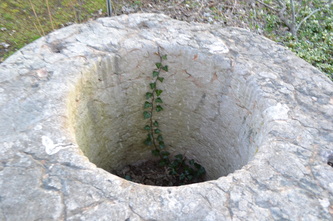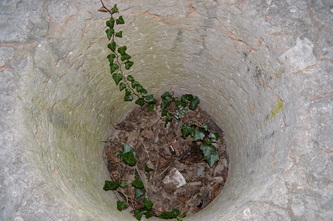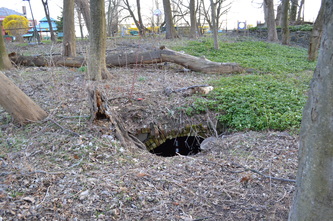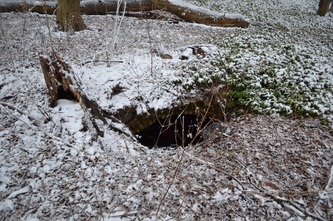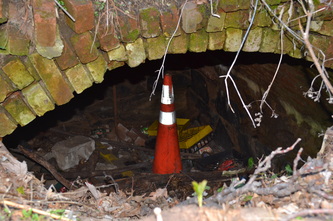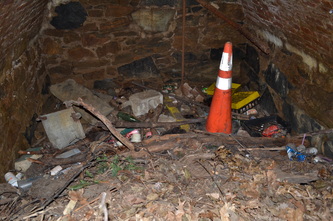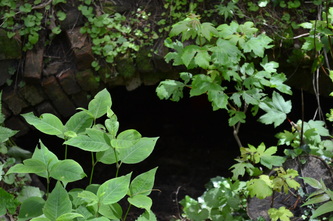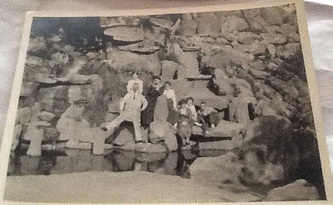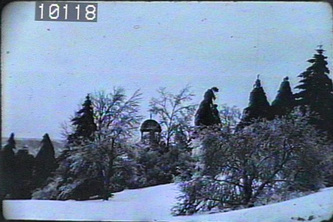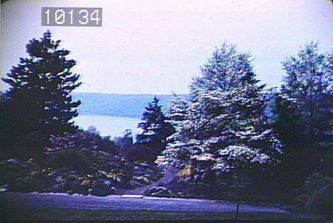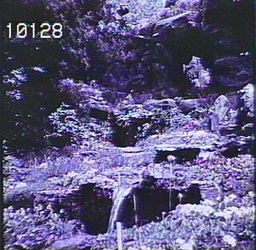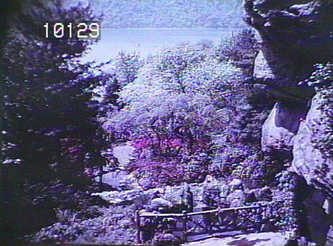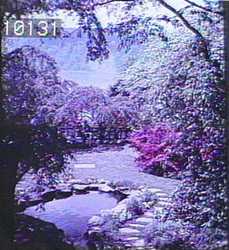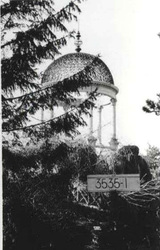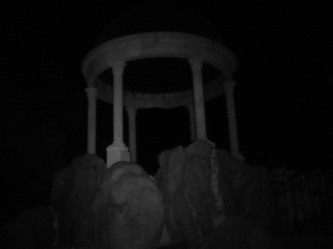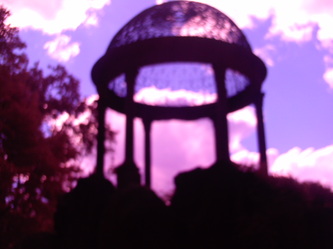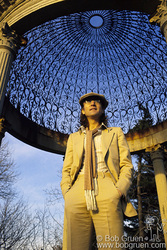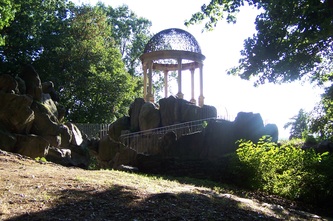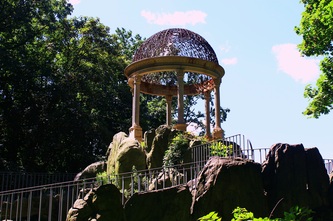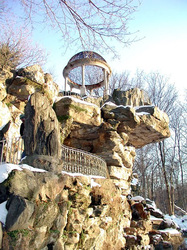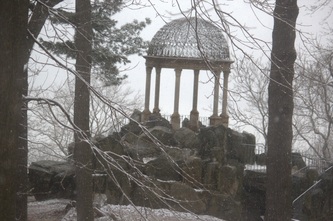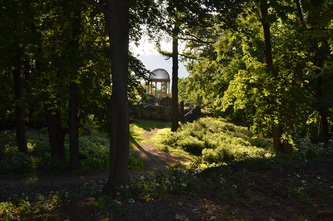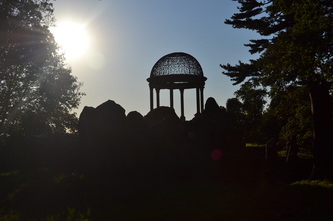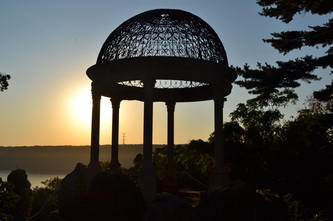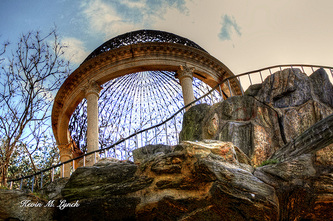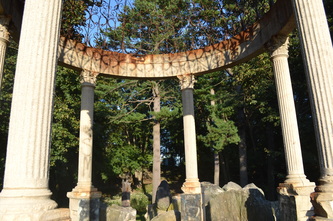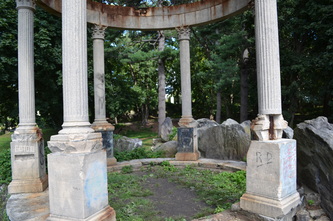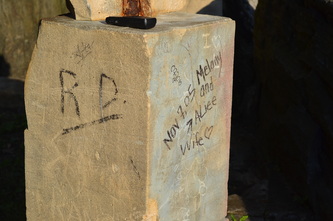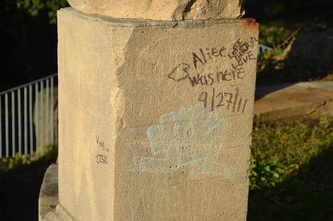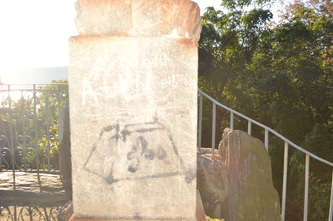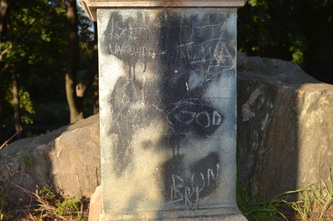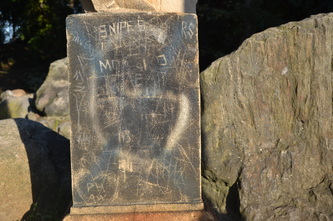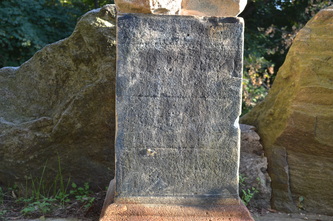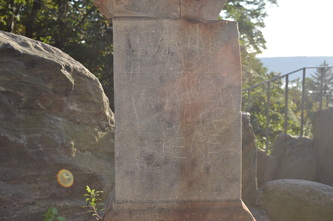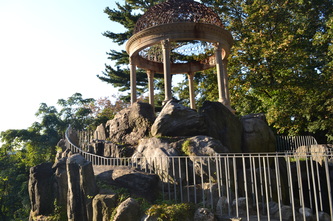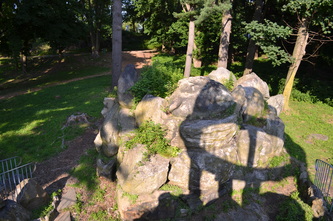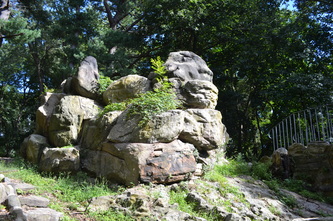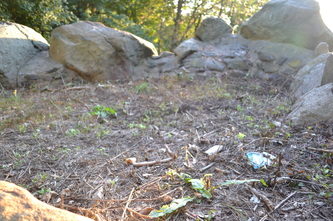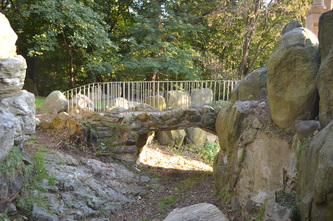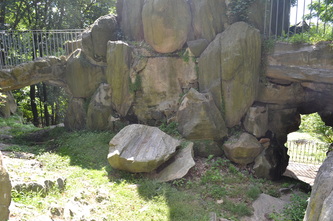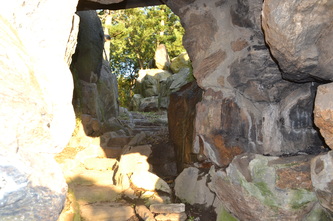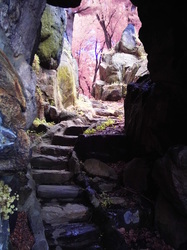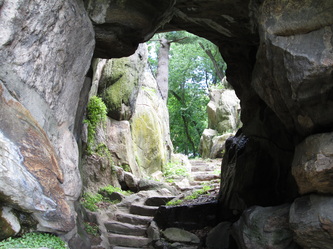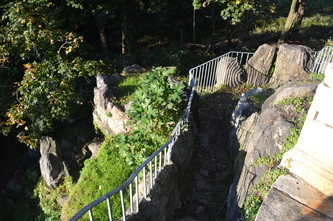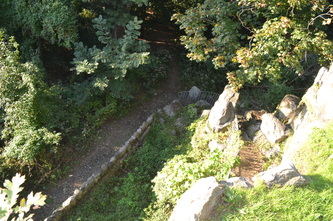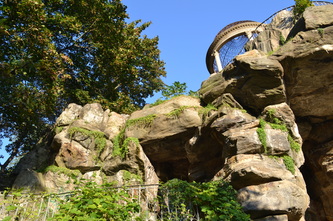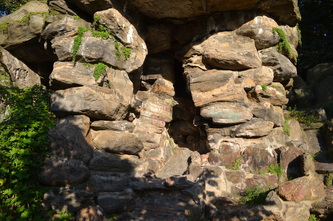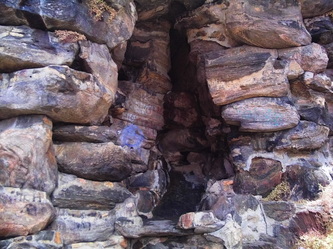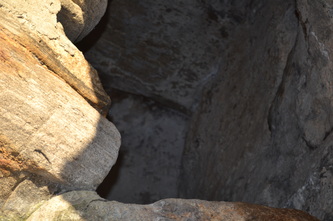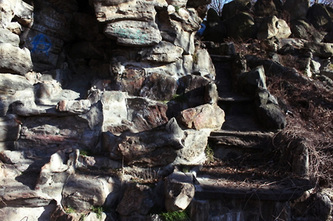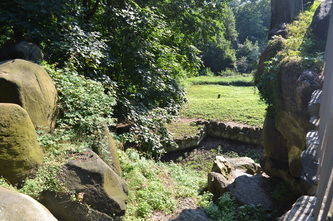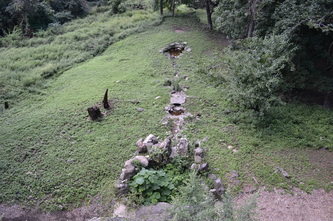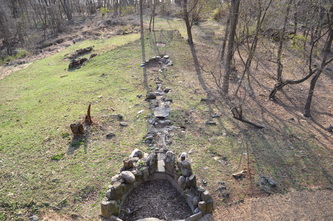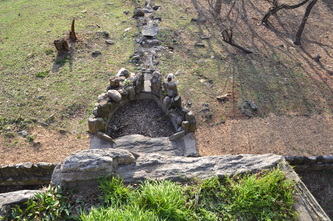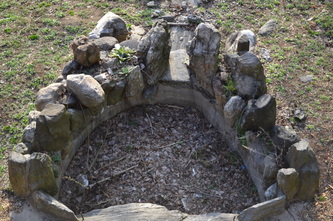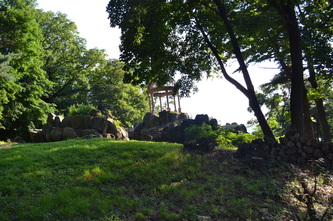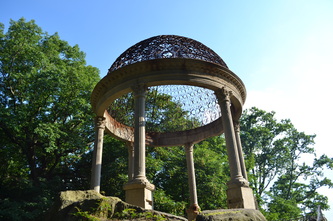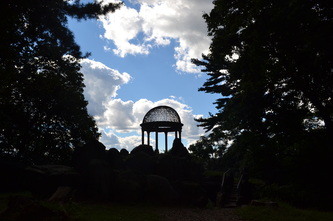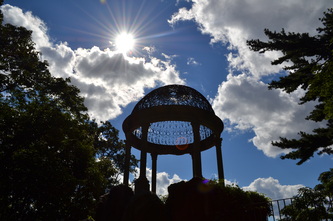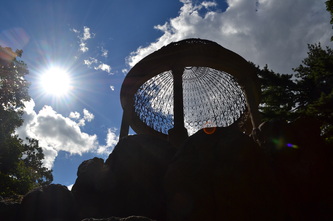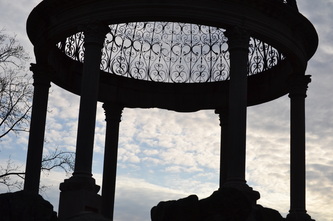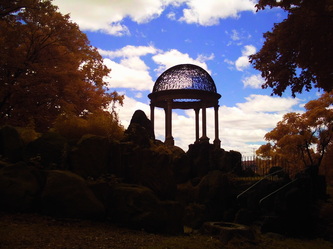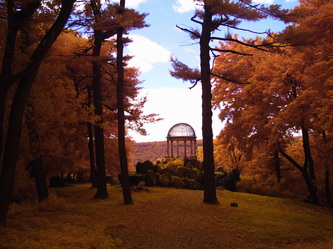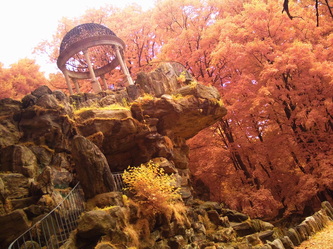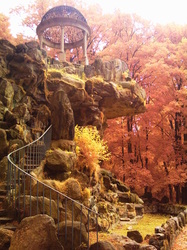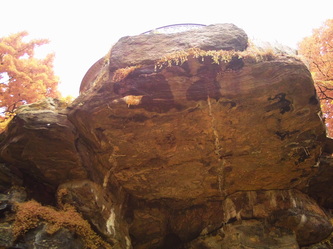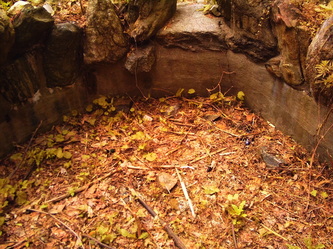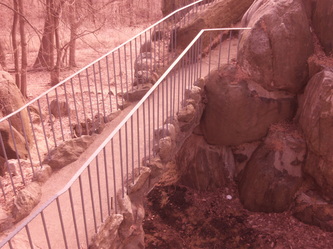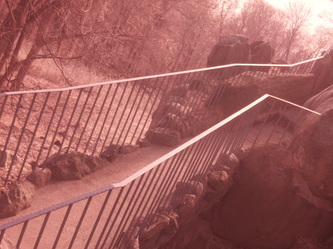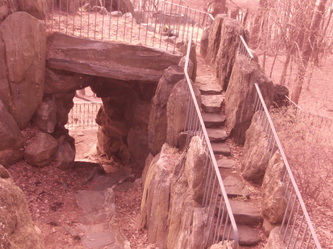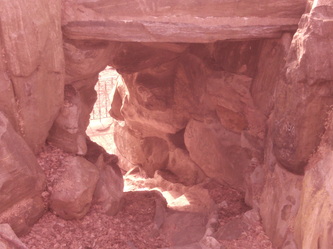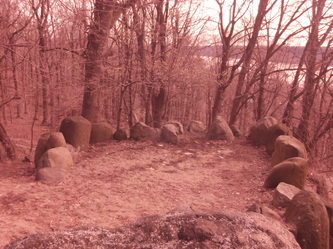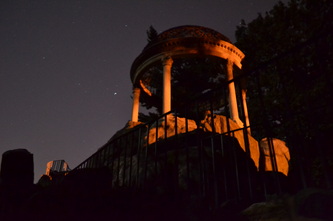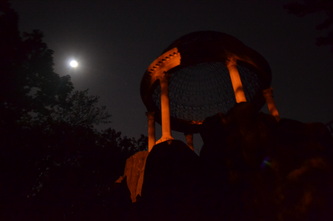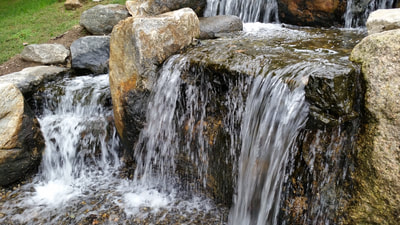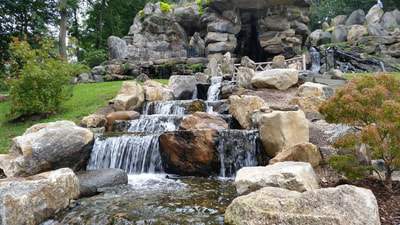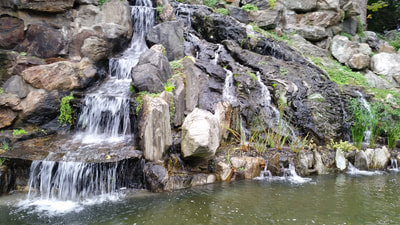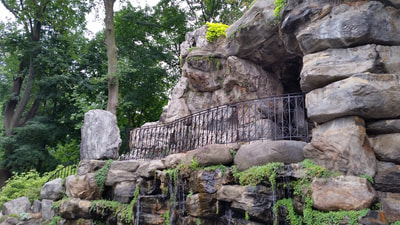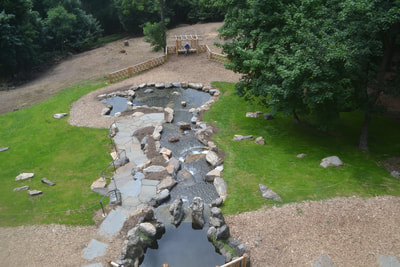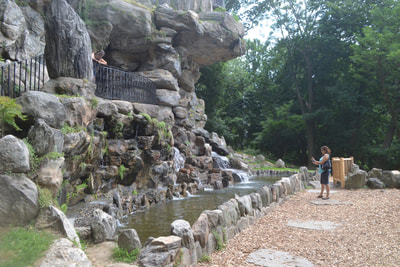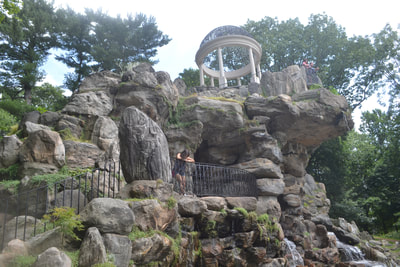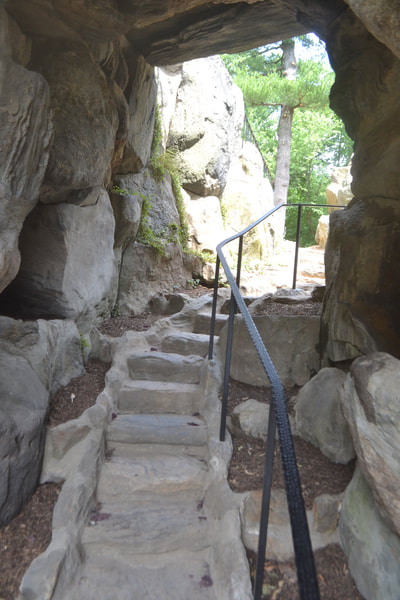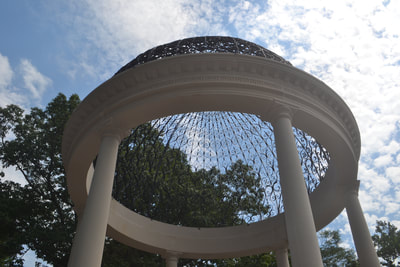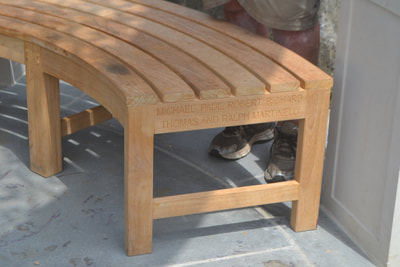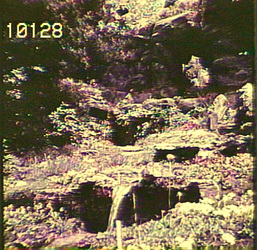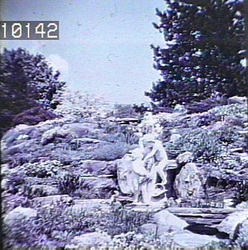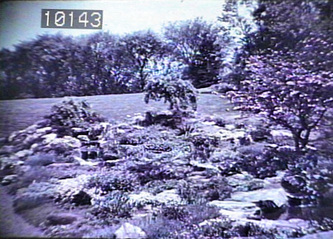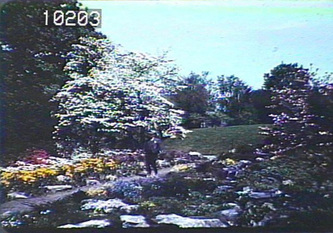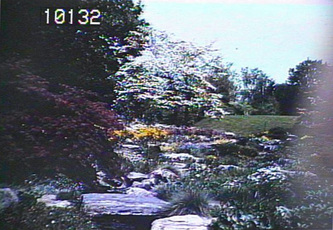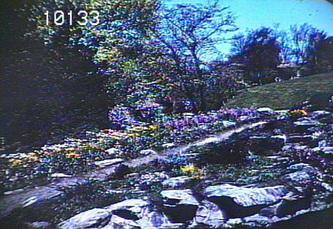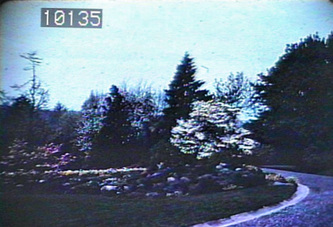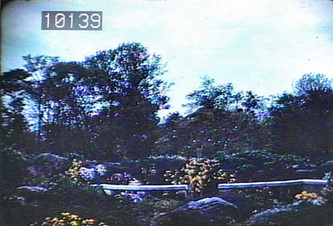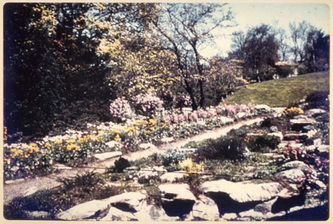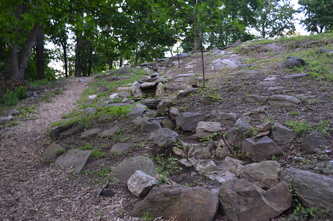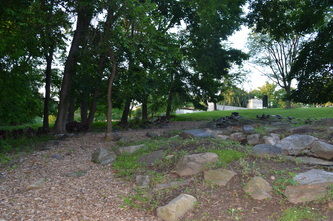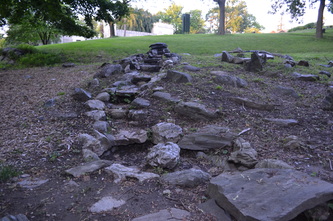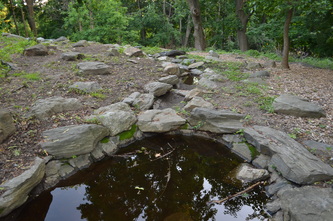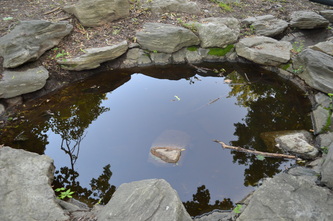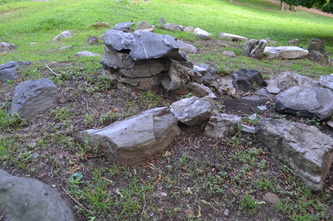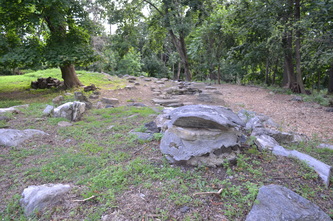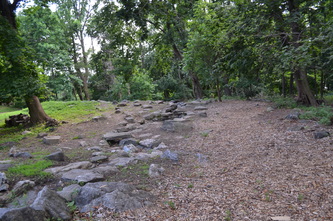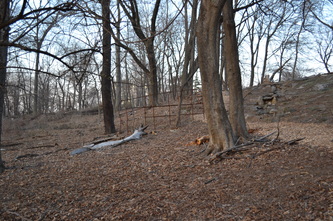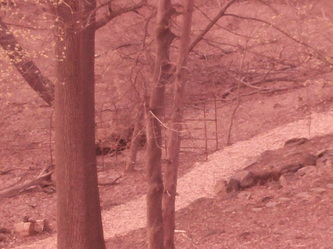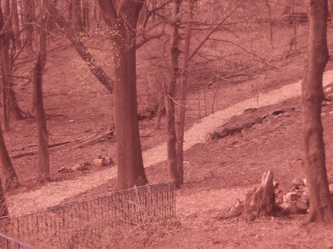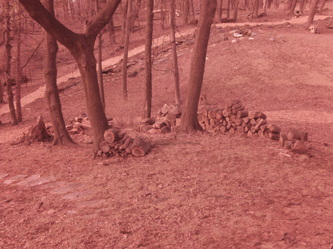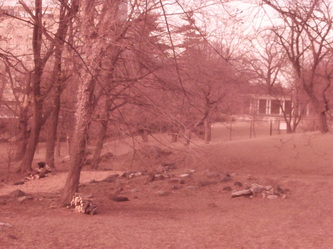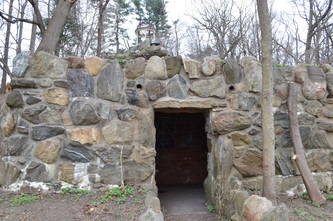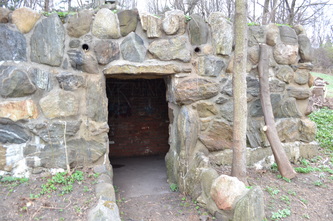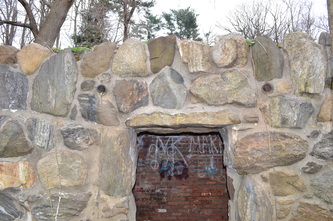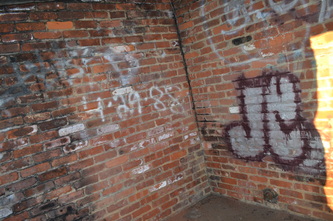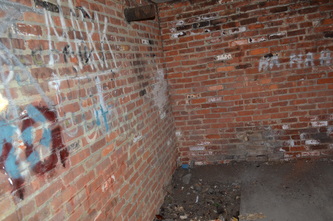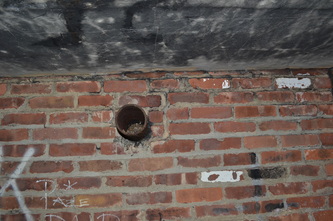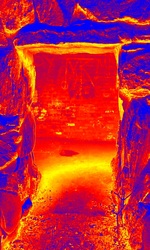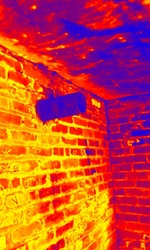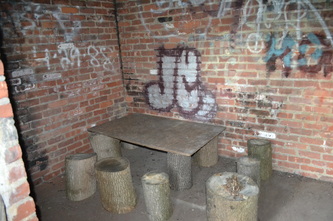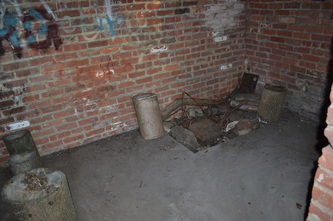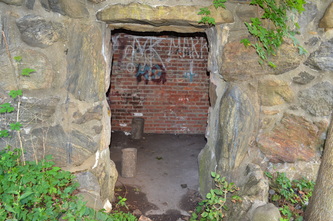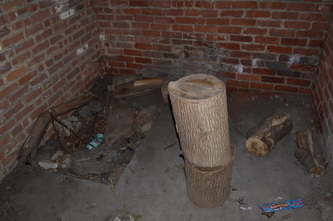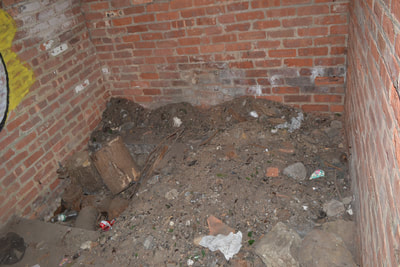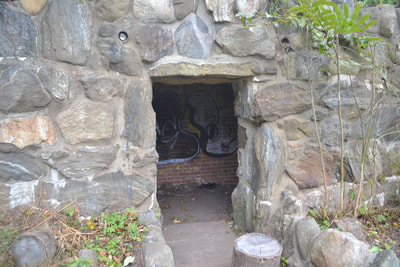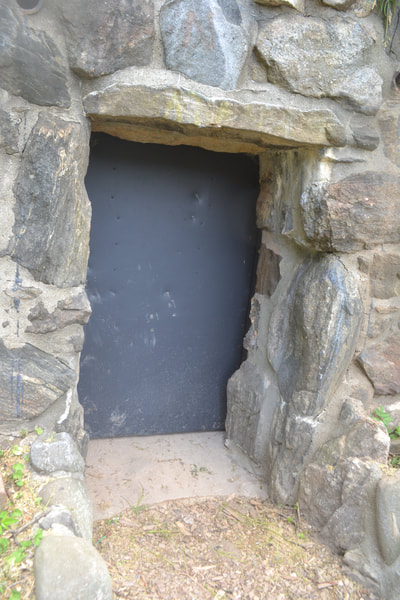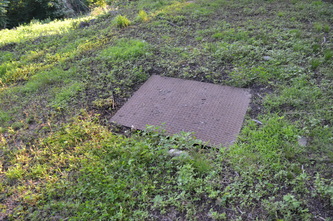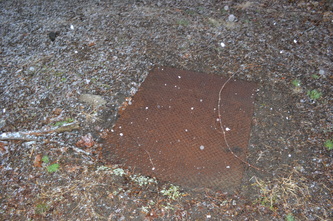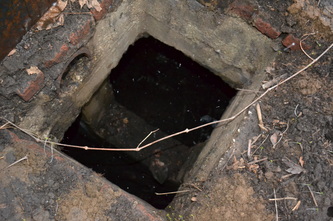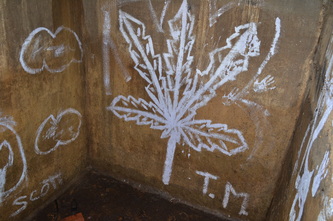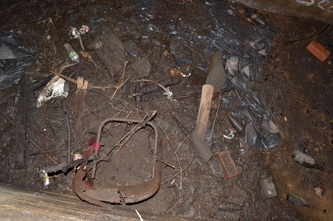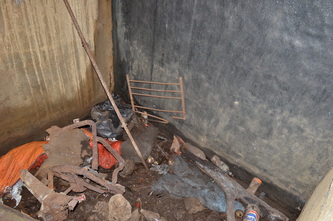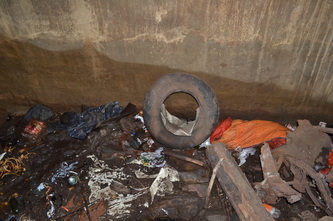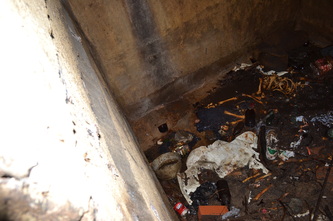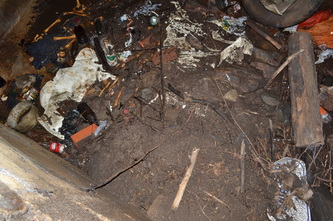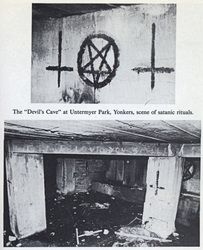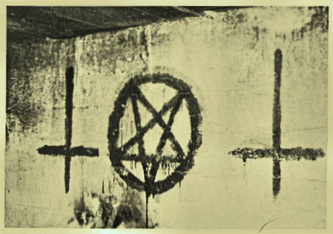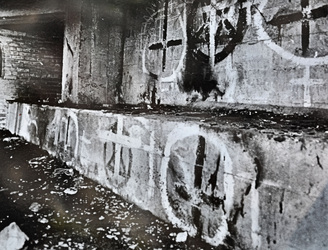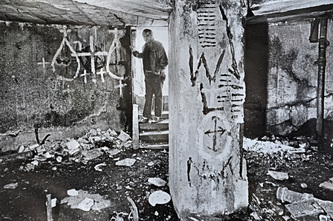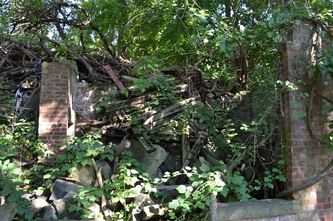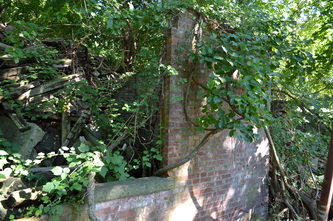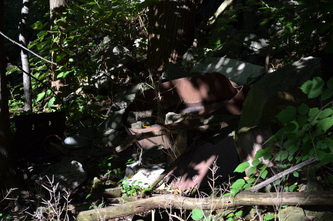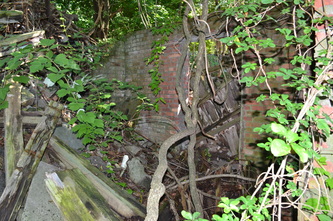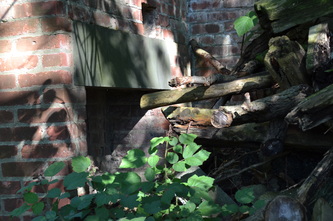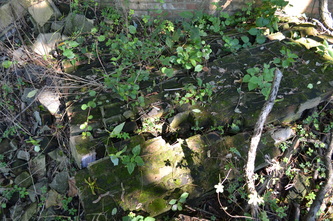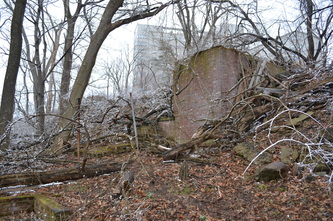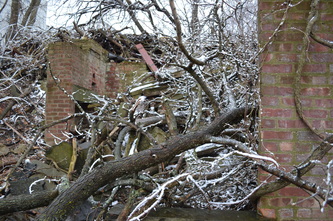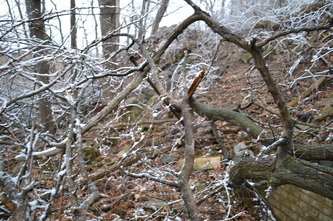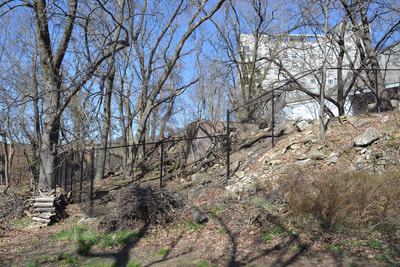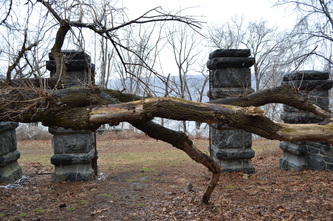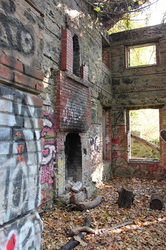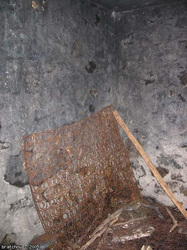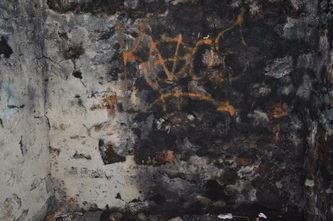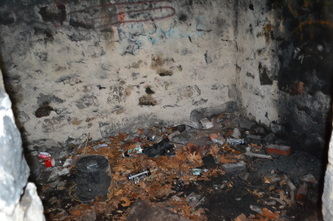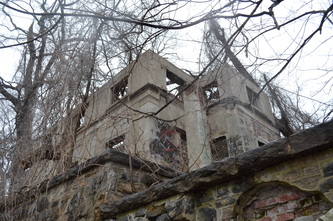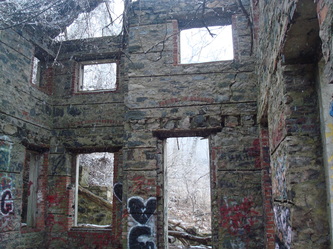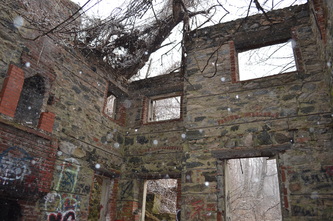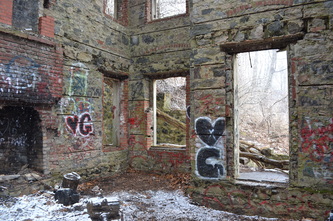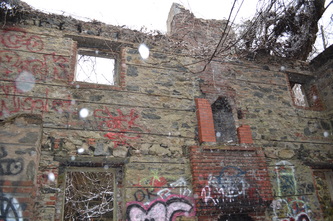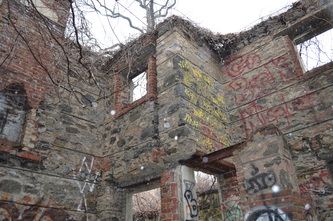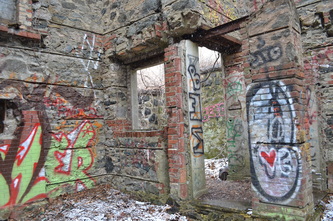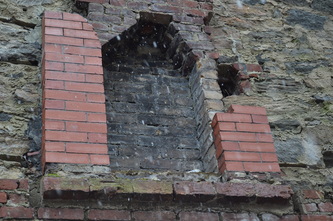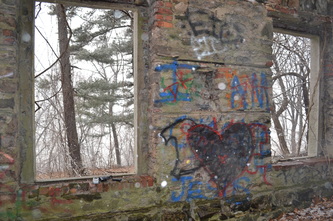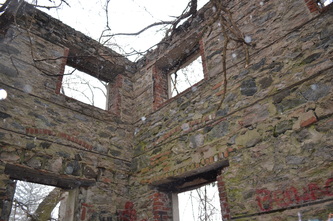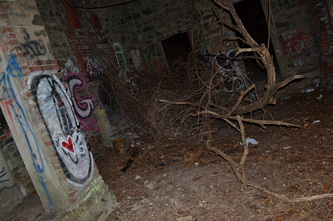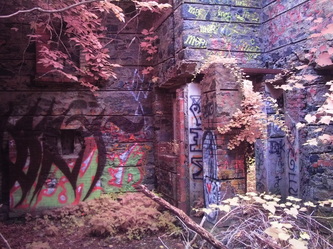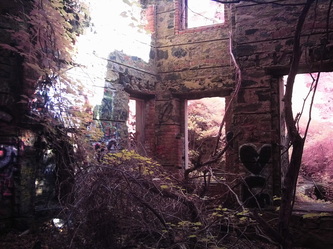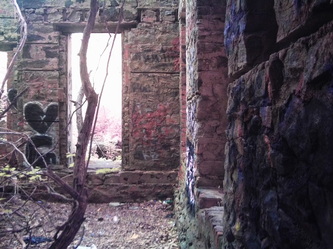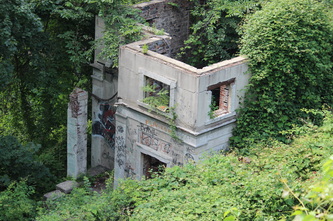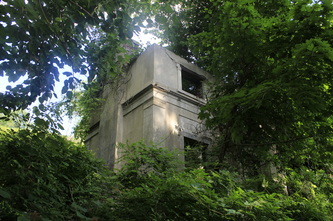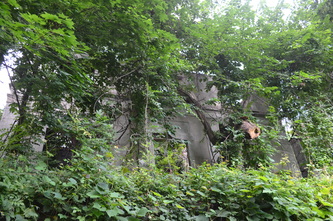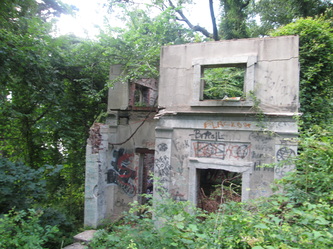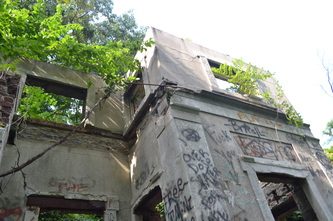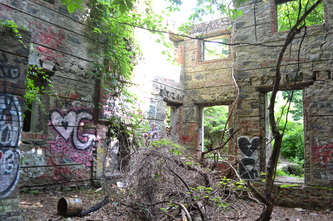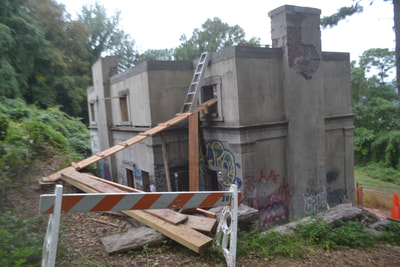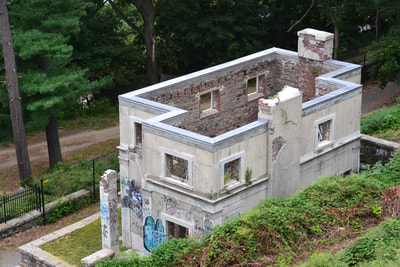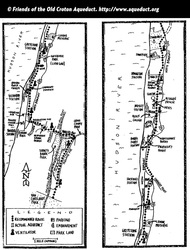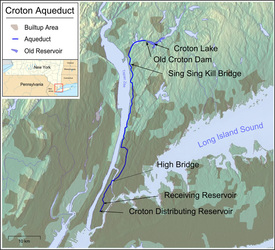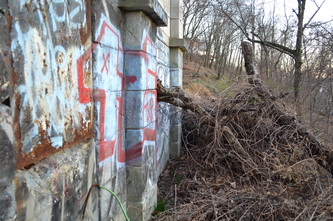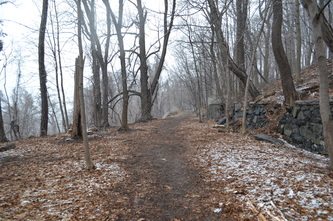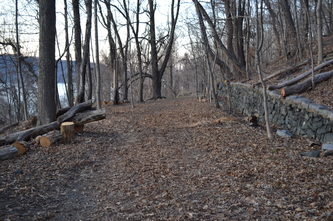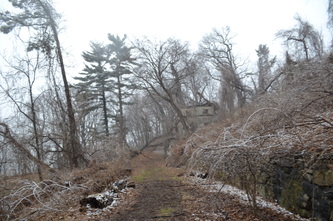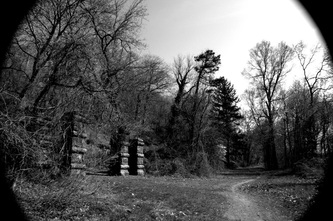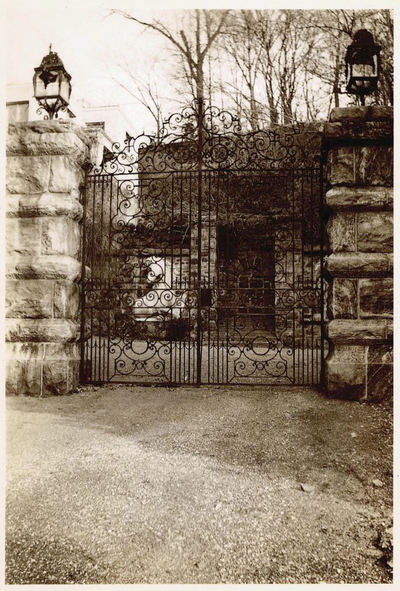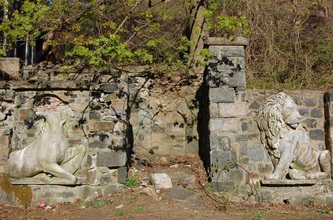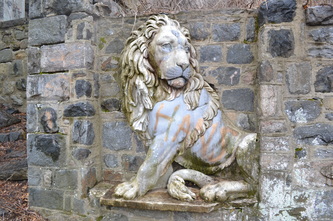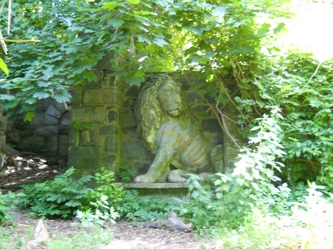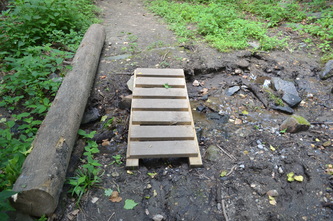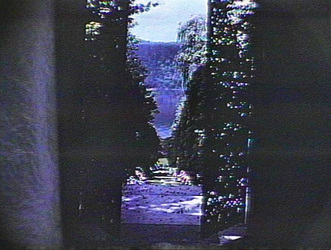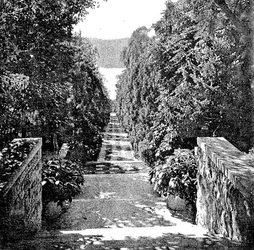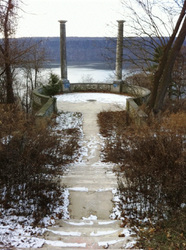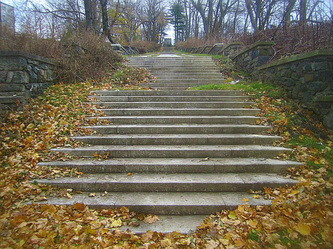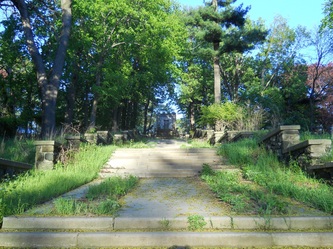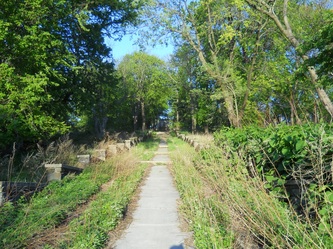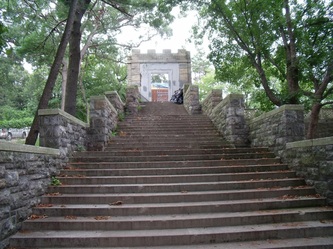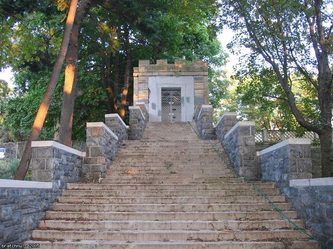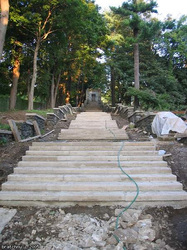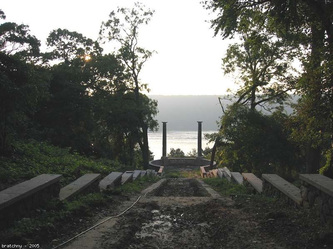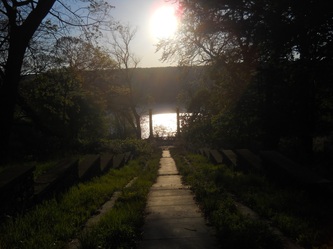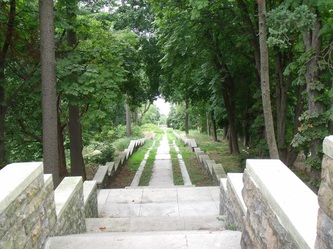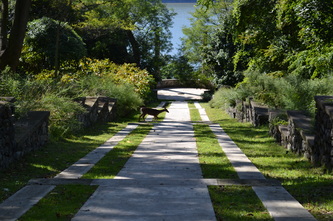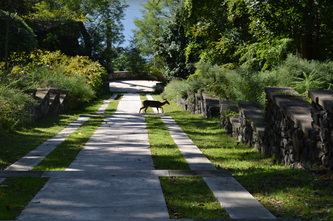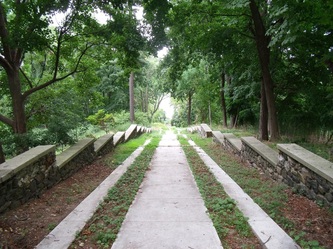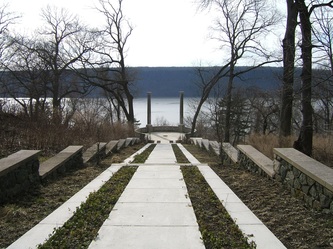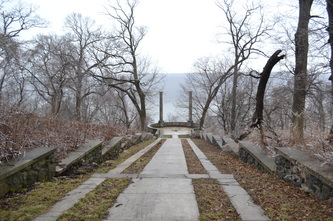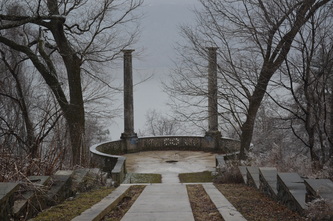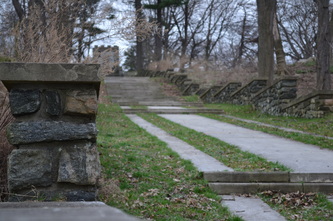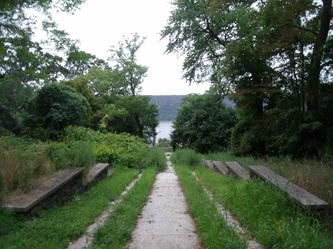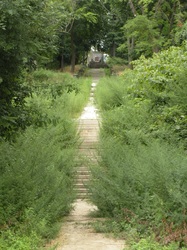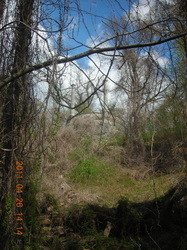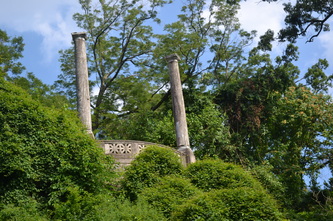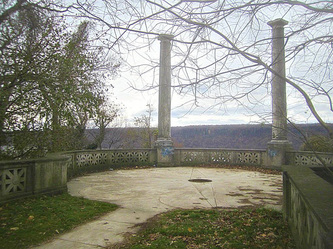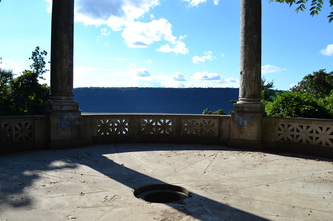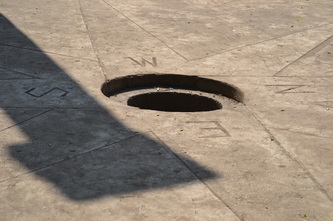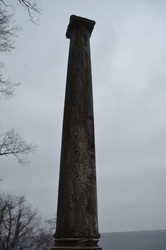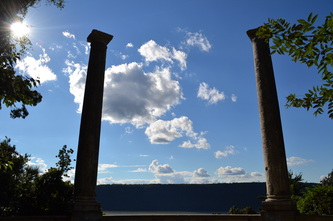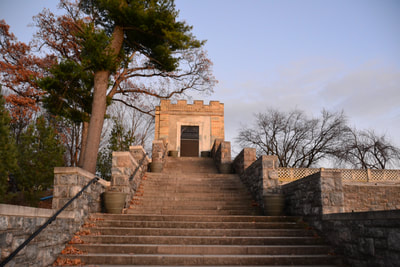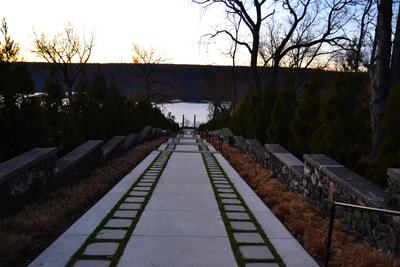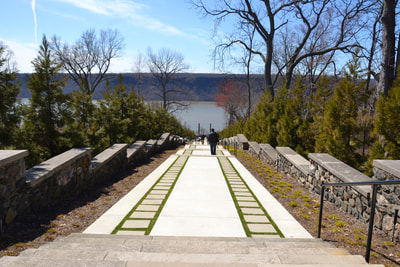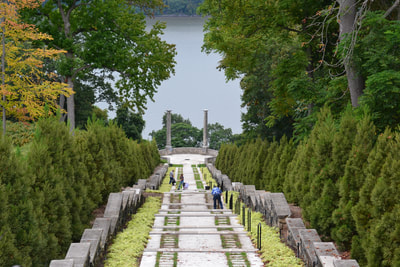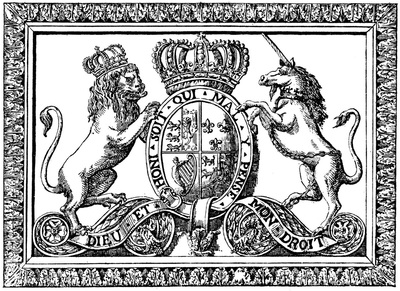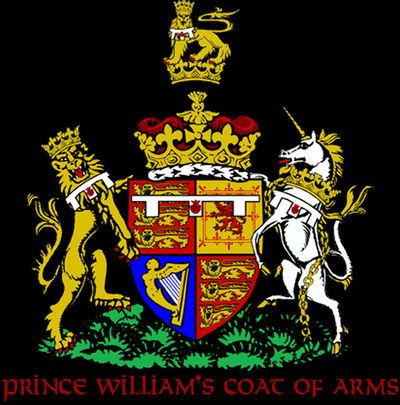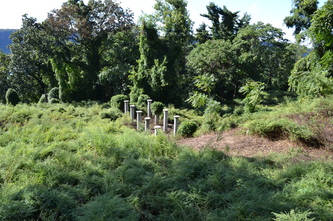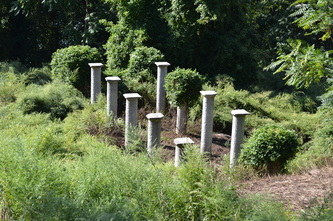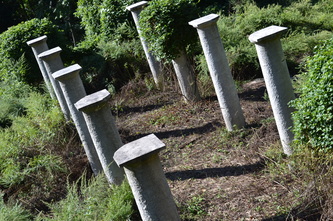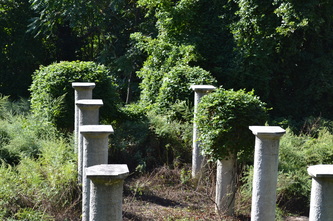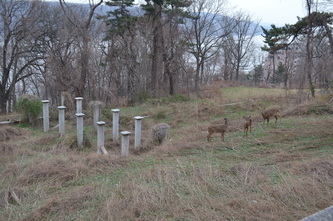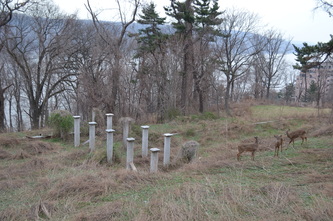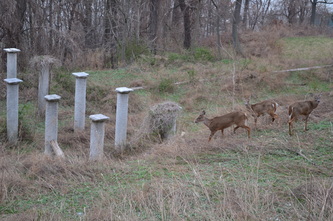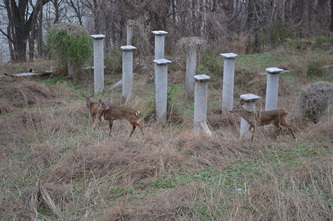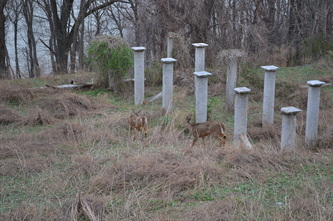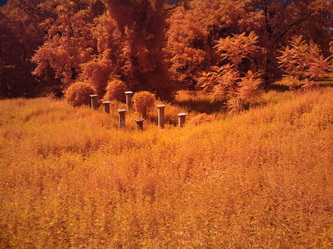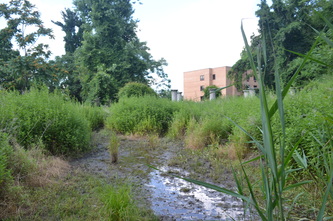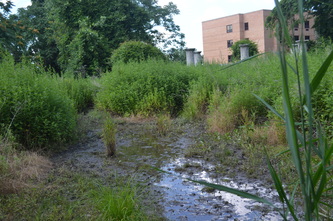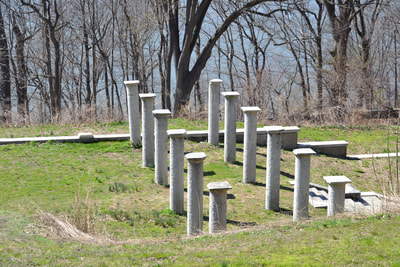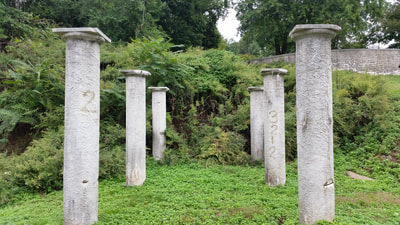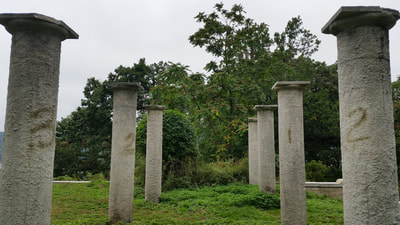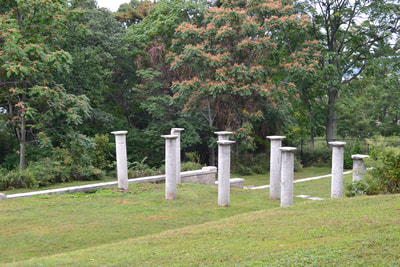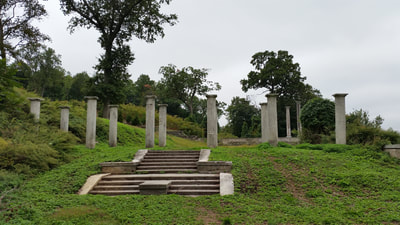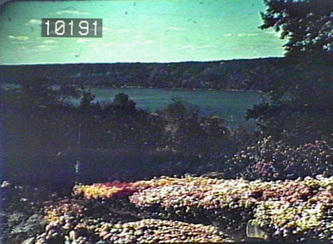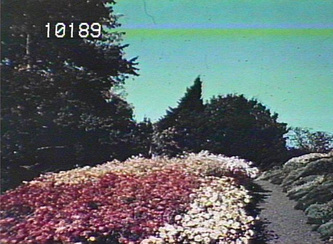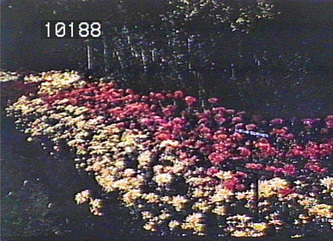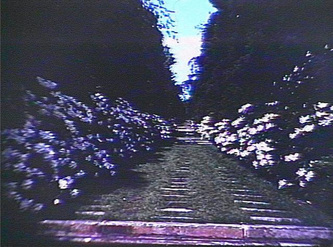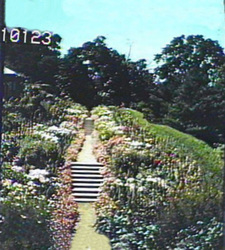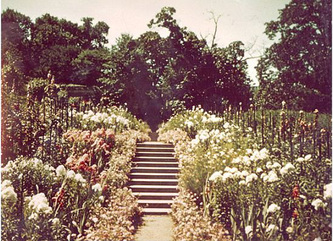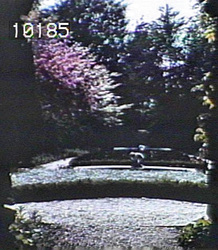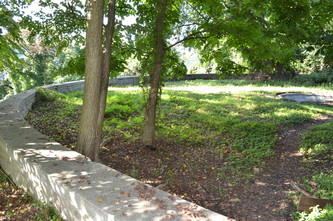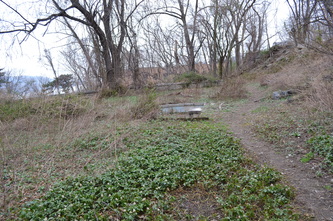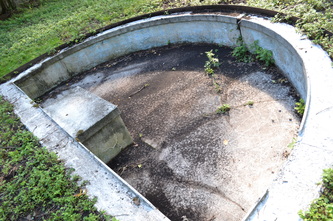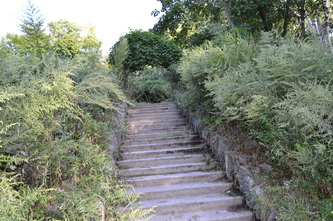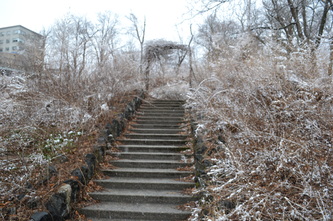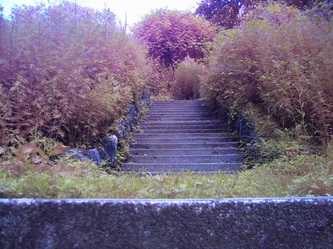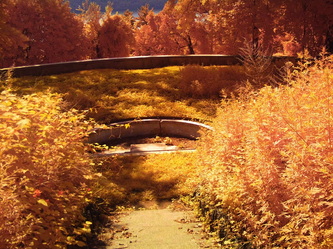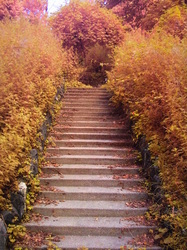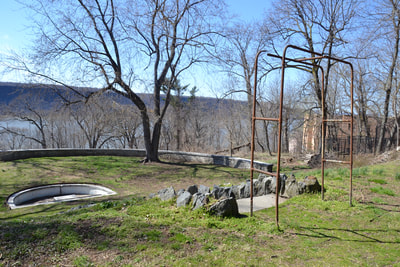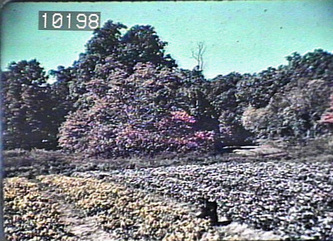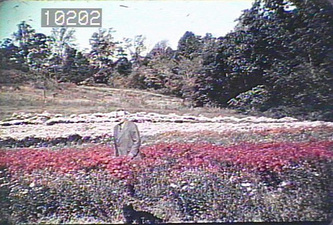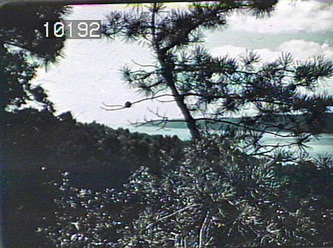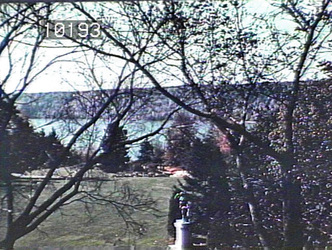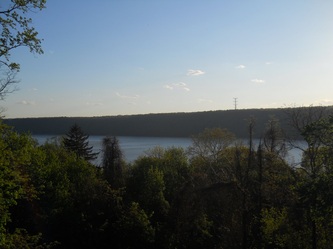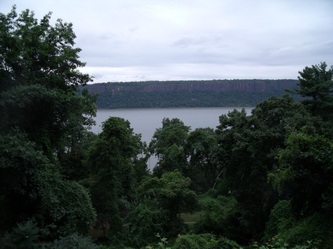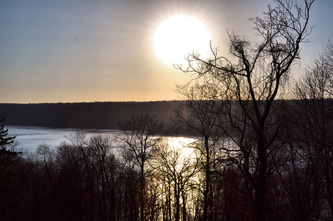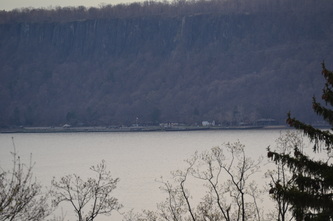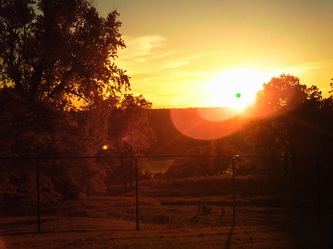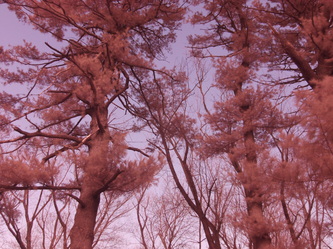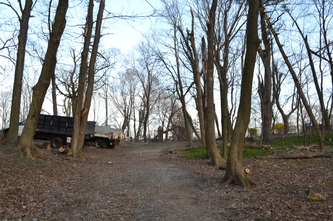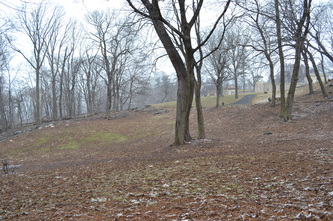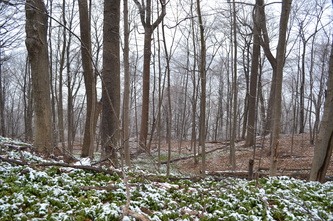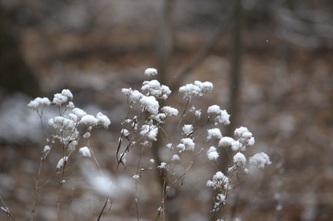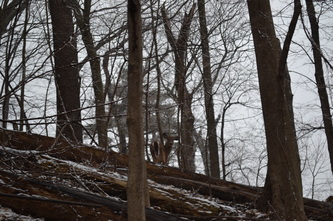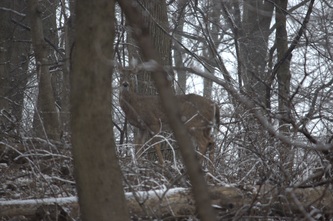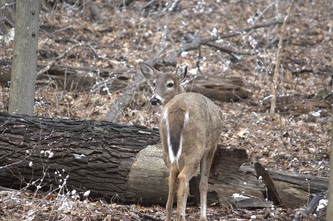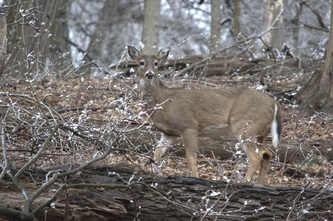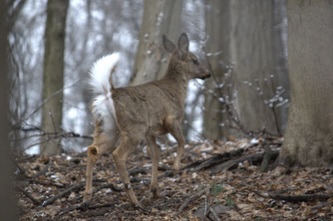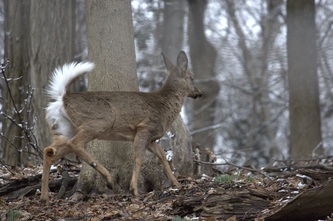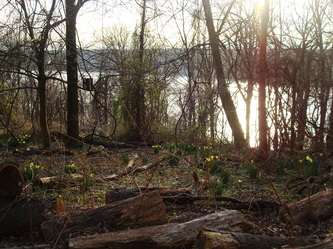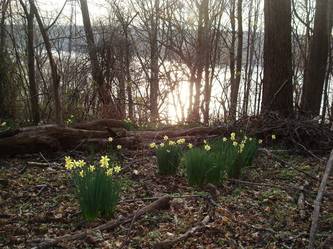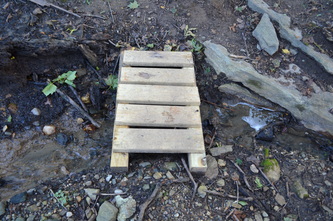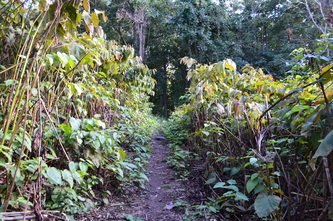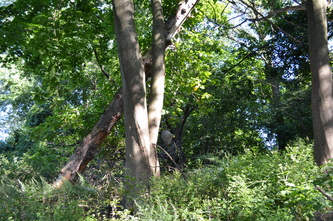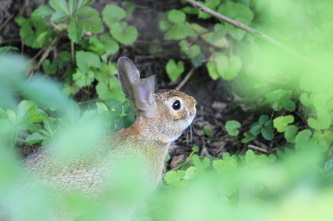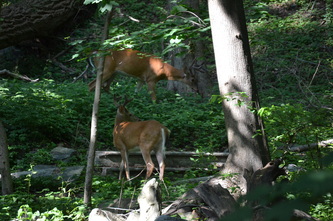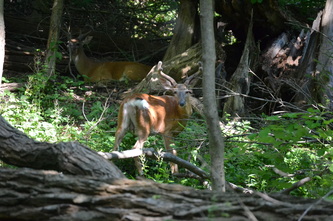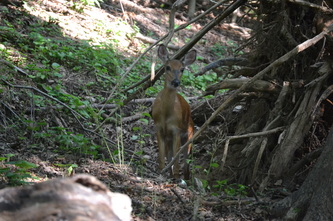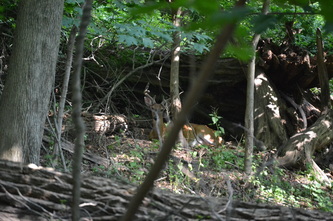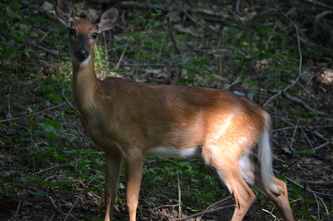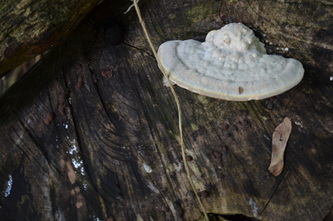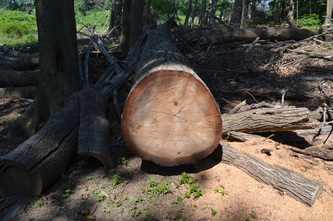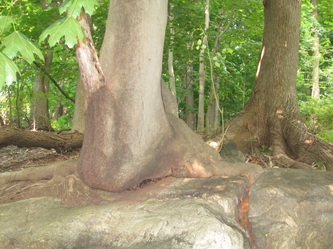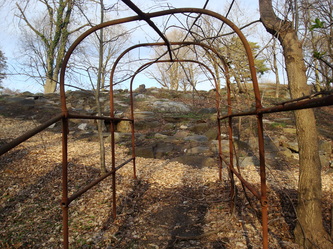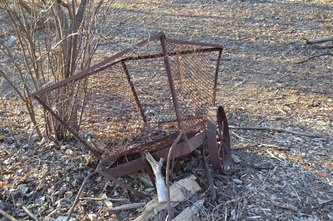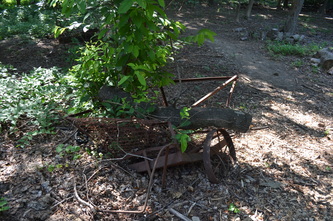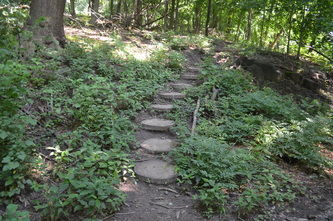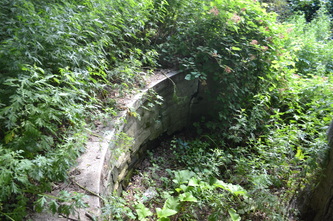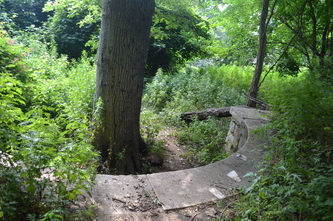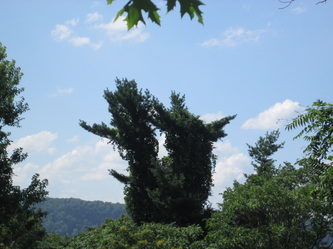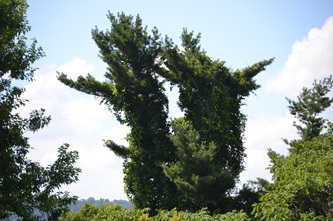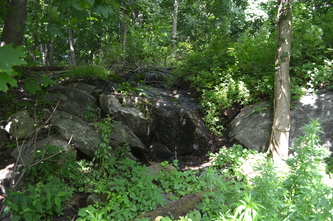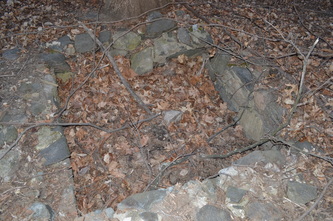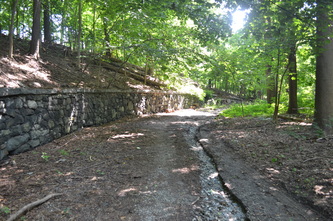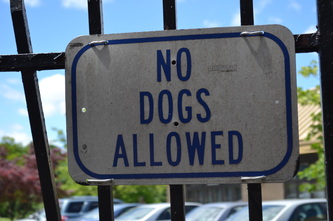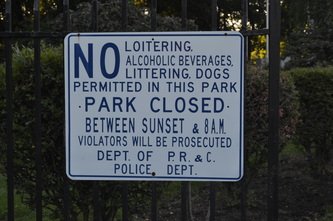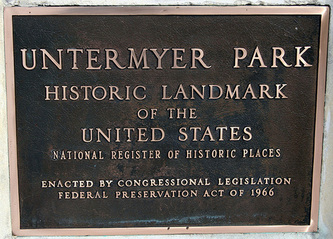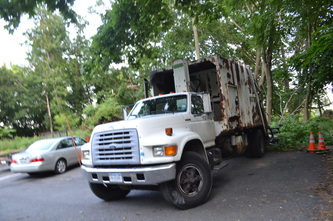UNTERMYER PARK
|
For many years people have visited Untermyer Park, which is located in Yonkers, New York. As beautiful & enchanting as the park can be, it is also a mysterious place filled with dark secrets that would chill you to the bone.
To understand the secrets of the park, it is best to dig into the park's past. I have been to many different websites, where little tidbits of its history are scattered here & there, but I have never been able to find one website that says it all. Out of frustration, I decided it was time to make a historical page dedicated to the park that would tell all. Let this be my tribute to a park that I have come to know & love. The park is located between North Broadway (once known as Albany Post Road) to its east & Warburton Avenue to its west with its main entrance at 945 North Broadway. When one enters the park & takes in the wondrous beauty of its fabulous gardens, statues, & old-fashioned gazebos, a feeling of euphoria engulfs you as you are transported to another place & another time. Not to mention, the views of the Hudson River & the Palisades are enough to dazzle even the most complex mind. The earliest known owners of the land, where Untermyer Park now stands, was the Bolmer family. William Bolmer owned much of the area, while M. T. Bolmer owned the area that would become Greystone. Very little is known about the Bolmers, aside from the fact that they were quite wealthy & owned practically most of the land that would someday make up the bulk of the Untermyer Estate, as seen in the map to the left.
As an amazing credit to himself, during his time as owner he extended the property to 63.3 acres, acquiring more of the land originally belonging to William Bolmer & doubling the size of the Greystone Estate.
|
However, in 1876 due to some damaging reversals in his hat business, Waring lost a great deal of money & in the end had to sell his estate.
In 1879 the estate was sold for $150,000 to Samuel Jones Tilden, a philanthropist & retired Governor of New York, who once ran for the United States Presidential candidacy against Rutherford Birchard Hayes. Like his predecessor, Tilden also extended the size of the estate an additional 46.4 acres by including a property called "Tanglewood," which was located on the west side of North Broadway, along with an undeveloped parcel of land on the east side. He also constructed several greenhouses throughout the estate & imported rare plants. He owned the estate until his death on August 4, 1886.
In 1879 the estate was sold for $150,000 to Samuel Jones Tilden, a philanthropist & retired Governor of New York, who once ran for the United States Presidential candidacy against Rutherford Birchard Hayes. Like his predecessor, Tilden also extended the size of the estate an additional 46.4 acres by including a property called "Tanglewood," which was located on the west side of North Broadway, along with an undeveloped parcel of land on the east side. He also constructed several greenhouses throughout the estate & imported rare plants. He owned the estate until his death on August 4, 1886.
|
After Tilden's death, the ownership of the estate remained indeterminate for nearly a decade, due to a delay in the execution of his will. It wasn't until 1899 when a certain multimillionaire lawyer & advocate from Virginia by the name of Samuel Untermyer purchased the property known as the Greystone Estate.
Samuel Untermyer was born in Lynchburg, Virginia to German Jewish immigrants in the year 1858. He moved to New York in 1866, where he later studied law at Columbia University. He quickly became very successful as a corporate lawyer & was the first lawyer to ever earn a 1 million dollar fee from a single legal case. In 1933 he helped New York City to maintain a 5 cent subway fare. He also advocated the Zionist liberation movement & was President of the Keren Hayesod, the agency through which the movement was & still is conducted in America. On August 9, 1880 he married Minnie Carl of New York City. They had 3 children. The first was a son named Alvin, who served in the 305th Field Artillery in France, during the Great War, or World War I. The next son was Irwin, who was a justice of the Appellate Division at the New York State Supreme Court. Their daughter, Irene, was a philanthropist, who married Louis Putnam Myers. When he died she remarried & became the wife of Stanley Richter. |
During the years 1900-1940 he expanded the estate to 150-acres, which included Duncraggan. Duncraggan was the name given to the mansion belonging to Eva Smith Cochran, daughter of Alexander Smith, who was the founder of Alexander & Sons Carpet Company. The Duncraggan mansion was located on the Smith Estate at the site, where St. John's Riverside Hospital now stands on North Broadway. It was sold to Samuel Untermyer by Eva Smith Cochran's daughter sometime after 1909.
Samuel Untermyer developed his fabulous estate into a picturesque landscape filled with beautiful gardens in the Beaux Arts style with Greek-styled gazebos, 60 greenhouses, Persian/Greek gardens, rock gardens, various Greek statuary, & even an elaborate waterfall. In 1915 he hired architect William Welles Bosworth to design his gardens. It would be an understatement to say that Samuel Untermyer enjoyed plants, flowers, and fine artwork.
Samuel Untermyer developed his fabulous estate into a picturesque landscape filled with beautiful gardens in the Beaux Arts style with Greek-styled gazebos, 60 greenhouses, Persian/Greek gardens, rock gardens, various Greek statuary, & even an elaborate waterfall. In 1915 he hired architect William Welles Bosworth to design his gardens. It would be an understatement to say that Samuel Untermyer enjoyed plants, flowers, and fine artwork.
|
On Tuesdays the public could roam the estate as guests, while Samuel Untermyer eavesdropped on their conversations to hear their comments. He took great pride in his estate and wanted to make sure there was nothing negative said about it.
After his death on March 16, 1940, the property was willed to the City of Yonkers. It opened to the public as a park in 1946, but with only 43-acres of the original land. The rest was used for St. John's Riverside Hospital & a few other surrounding properties. Two years later in 1948 the Greystone mansion was demolished.
|
Samuel Untermyer was laid to rest at Woodlawn Cemetery in the Bronx at the Cliff section on Whitewood Avenue, which is on the side of the cemetery closest to Webster Avenue. Even in death he was surrounded by a walled garden. Other relatives are interred in the ground within the garden. a fabulous monument watches over Untermyer's grave.
Unfortunately, by the late 1960s the park had begun its fall into a state of great disrepair. The waterfall was shut off & many of the monuments were slowly swallowed up by the overgrowth of trees, grass, & weeds. Sometime around 1970, the park took a dark turn when it was being used as a meeting place for teenage prostitution and sex trafficking. By this time, it was also home to hippies and drug abusers.
|
In 1972 the first restorations began with the intentions of bringing the park to its former glory. It would be a long hard road. Still, the park was added to the National Register of Historic Places in 1974. The mosaic swimming pool was restored & refilled by 1976.
|
For the most part, dogs were the main victims. It remains a mystery what or who else might have been sacrificed here. There are rumors that young boys may have been buried in the park, but no evidence of that has ever been found to back up that claim.
|
|
"On August 11, 1977 two young boys, ages eleven and fourteen, were walking along the trail somewhat south of Untermyer Park. They weren't out for a relaxing walk on the warm summer's day. Searching through the tangled brush adjacent to the aqueduct behind Berkowitz's apartment, the youths were on a specific mission. They were looking for a grave.
The previous Christmas, they found three dead German shepherd dogs at the site, lying together in separate plastic bags. The boys had buried the animals but now, hearing of Berkowitz's alleged hatred of canines, they believed their find might be connected to the case. At first, the police weren't interested. Yonkers Det. Leon Wyka said he thought NYPD wouldn't be concerned with the animals. "They're satisfied—they got their man," he told the Yonkers Herald Statesman. However, after some publicity about the matter, Yonkers PD picked up the skeletal remains and had them autopsied. Two of the shepherds, which still had chains around their necks, were strangled; the third was shot in the head." - An excerpt taken from "The Ultimate Evil: The Truth About the Cult Murders: Son of Sam and Beyond" by Maury Terry |
|
The infamous "Son of Sam" serial killer, David Berkowitz, belonged to this cult & took part in the rituals. Many of these rituals were performed in the ruins of an old pump house nicknamed "The Devil's Cave," which has since been demolished. It stood in the area near the old columns & the abandoned ruins of the Gate House. David Berkowitz claims he did not act alone in the murders & that other cult members assisted him. After his arrest, several cult members, who were friends of his turned up dead. Within a few years the cult left the New York area.
By the 1980s the park had once again fallen into a state of disrepair. Graffiti now covered its walls, which were too often soaked in urine. Scattered garbage piles appeared throughout the park & vagrants continued to use the park as their own personal place to get drunk or high. During the mid-1980s there was an effort to restore the old Carriage House near North Broadway & turn it into a museum, which would contain exhibits of the Untermyer family & the Greystone Estate. Unfortunately, those plans never came to fruition because a devastating fire destroyed most of the Carriage House. It was eventually demolished & the current community center was built in its place. Also, by the late 1980s the swimming pool was drained, again. After the tragic events of September 11, 2001, a memorial was established for the fallen heroes of that day & of the past. Thankfully, in recent times efforts are still being made to beautify the park. Boy Scouts & workers from the Yonkers Parks, Recreation, & Conservation have helped to clean up debris & excavate artifacts. However, the Untermyer Gardens Conservancy has played the biggest role in restoring the park's ruins, gardens, & grounds. Untermyer Park is slowly beginning to reclaim its once wondrous beauty. During the summer the Untermyer Performing Arts Council holds many free events at the park, which offer a fine taste of culture for the visitors to the park. |
However, it is believed that the ghosts of the past still linger around in certain areas of the park, even during the daytime hours. Satanic evil cannot so easily be erased. Some believe there are still black masses being held in the park at night, although I am wondering if people are confusing seeing my team with cult members, since we also dress in dark clothing. That would be amusing to think we are adding to the lore. One thing is for certain, there have been EVPs collected at various locations & photos taken of ghostly apparitions. Evidence has been collected both during the daytime and nighttime hours.
For more information check out my book, Ghosts and Legends of Yonkers, published by The History Press.
This webpage was created as a tribute to the park's history & includes photos of the park's many sites. The photos were either collected from the Internet or taken by us, during our many investigations here. I'd like to thank the many of you, whose photos I am borrowing for display on this page. I will not, by any means, take credit for your work. I only wish to share it with everyone, who finds this park as enjoyable & fascinating as I do. As a disclaimer, be advised many of these images are protected by copyright laws and should not be published without permission of the owners.
Below is an updated map, which details the specific locations of the park that exist today. Below the map are numerous photo galleries of each of the different locations, which are listed on the map. If there are any questions or comments, you may use the contact form on the home page or the specific blog post I've dedicated to Untermyer Park.
For more information check out my book, Ghosts and Legends of Yonkers, published by The History Press.
This webpage was created as a tribute to the park's history & includes photos of the park's many sites. The photos were either collected from the Internet or taken by us, during our many investigations here. I'd like to thank the many of you, whose photos I am borrowing for display on this page. I will not, by any means, take credit for your work. I only wish to share it with everyone, who finds this park as enjoyable & fascinating as I do. As a disclaimer, be advised many of these images are protected by copyright laws and should not be published without permission of the owners.
Below is an updated map, which details the specific locations of the park that exist today. Below the map are numerous photo galleries of each of the different locations, which are listed on the map. If there are any questions or comments, you may use the contact form on the home page or the specific blog post I've dedicated to Untermyer Park.
MAPS OF GREYSTONE/THE UNTERMYER ESTATE
These are maps of the Untermyer Estate as it gradually grew in size, eventually engulfing the remains of the Duncraggan Estate belonging to Eva Smith Cochran. As you can see the Untermyer Estate was much larger than what is now Untermyer Park. It even extended across North Broadway almost reaching Nepperhan Avenue to the east.
GREYSTONE/THE UNTERMYER ESTATE
The Untermyer Estate was once home to Samuel Untermyer & his family. He purchased it in 1899 from Samuel Jones Tilden, who owned it from 1879, until his death in 1886. Prior to that it belonged to John Thomas Waring, who built it in 1864. The 99 room Greystone Mansion, which was designed by architect John Davis Hatch, had fabulously tiled corridors, fancy Turkish carpets, inlaid furniture, canopy beds, rare paintings & sculptures. It was the only house in Yonkers with a second floor swimming pool, at the time. It once stood on the same location as the Richmond Children's Center, until it was razed in 1948. It took 3 months to complete the job. You can still see the walls that once held up the mansion when standing along the fence overlooking the woods from the playground, which was once the terrace of the mansion. Below are illustrations of Greystone when it belonged to Tilden, followed by photos of the Greystone Mansion, Carriage House, the various gardens, & structures on the estate. The final photos are of the gate that still remains on Warburton Avenue, the address to the Richmond Children's Center on North Broadway, & the remains of the Greystone Mansion.
|
SAMUEL UNTERMYER
Below are several photos of Samuel Untermyer taken throughout his life. In a few he can be seen sitting at a hotel in Palm Springs, California with his good friend, Albert Einstein. The last photo is of his grave site at Woodlawn Cemetery in the Bronx.
THE SUN DIAL
This was the world's largest living sun dial & it was located near the bottom of the hill, where the rock garden is located. The last photo shows the area how it looks today.
|
UNTERMYER ESTATE GREENHOUSES
There were approximately 60 greenhouses located on the Untermyer Estate. Below are photos of the greenhouses with a few visitors. The greenhouses are no longer around. Just to be clear the greenhouses from the now abandoned Boyce Thompson Institute were not a part of the estate. They are located north of Odell Avenue and belonged to William Boyce Thompson, who lived at Alder Manor.
|
HOUSES ON NORTH BROADWAY
These are several houses that were located on North Broadway on property that belonged to Samuel Untermyer. Their addresses ranged from 944 to 967 North Broadway, which would include the property formerly belonging to Eva Smith Cochran.
|
DUNCRAGGAN/ST. JOHN'S RIVERSIDE HOSPITAL
The Smith Estate originally belonged to Alexander Smith, founder of Alexander & Sons Carpet Company. After his death the property passed into the hands of his daughter, Eva Smith Cochran. She married William F. Cochran, who had a fabulous Victorian mansion built for her, which he named Duncraggan. After her death in 1909, her daughter eventually sold the property to Samuel Untermyer. Upon his death this portion of his estate went to the City of Yonkers. The house was demolished & in 1959 St. John's Riverside Hospital was built in its place. The pillars that once stood at the entrance of the estate still stand at the bus shelter of the hospital & bear the Duncraggan name. Below are photos of the house, Alexander Smith, William Francis Cochran, Eva Smith Cochran, & her grave at Oakland Cemetery.
Below are photos of St. John's Riverside Hospital, which is currently located right next to Untermyer Park on North Broadway. Although, it is not a part of the park, the land it was built on once belonged to the Greystone Estate.
|
CHARLES A. COLA COMMUNITY CENTER & MAIN OFFICE
This is the main office to the park, which is located near the main entrance gate on North Broadway. It was dedicated in 1990 & named after Charles A. Cola, a former 5-term member of the Yonkers City Council, who passed away in June of 1989. Restrooms, water fountains, & pamphlets with the park map can be found within the building. Prior to its construction an old gray carriage house stood on this site, but it was demolished in the late 1980s, after being destroyed by a fire in 1983. Prior to that it had been undergoing renovations & was meant to open as a museum. It had been abandoned in 1966, after another fire.
|
UNTERMYER PERFORMING ARTS COUNCIL (UPAC)
The Untermyer Performing Arts Council is a 501.c.3 non-profit organization operated solely by a volunteer Board of Directors. It was established in 1976 & continues to exist today sponsoring admission free summer concerts & other admission free performances on a summer stage at the park. All events are held on Saturdays beginning with the last one in June & ending with the first one in September. As a part of the audience, you are encouraged to bring lawn chairs or blankets for your own comfort & convenience. In 2001, UPAC received the “Community Education Award” from the Westchester Arts Council for their outstanding work with community events. More information can be obtained on their website or in the main office of the park.
|
RICHMOND CHILDREN'S CENTER, INC.
In 1954 the New York Cardiac Center built this building located at 919 North Broadway on the former site of the Greystone mansion. It's located at the southern most end of the park with its own entrance gate. The rear wall of the playground, which now overlooks the tall trees of the park, once had a grand view of the Hudson River & Palisades when it was the terrace of the Greystone mansion. It was purchased by the Richmond Children's Center in approximately 1973 and has served as a medical center for children. The Richmond Children's Center was founded in 1937 & is part of the Richmond Group.
|
WALLED GARDEN WITH PAVILION & AMPHITHEATER
This fabulous Persian-styled garden was built as a part of the old Untermyer Estate. It was designed by William Welles Bosworth & Charles Leavit & constructed by immigrant Italian stone masons with imported Grecian statues & columns. It contains a pavilion, an amphitheater, statuary, & 4 canals. The canals represent the 4 ancient rivers & divide the garden into 4 quadrants that represent the elements of earth, air, fire, & water. The columns within the garden progress from the oldest order, Doric, to Ionic, & to Corinthian. The circular colonnade temple, or pavilion, is approximately 30 feet in diameter. It has one of best mosaics in the garden, which is that of the Gorgon named Medusa. It symbolizes the union of 2 water elements, which are the fountains & the Hudson River, as Medusa is the offspring of 2 marine gods. Below that was once a large swimming pool, which is decorated with an elaborate 4,500 square foot mosaic featuring many sea creatures, although it has been dried up for years now. It was originally drained sometime between the 1940s-1950s, after the death of Samuel Untermyer. It was refilled in early 1976 during a restoration of the park that began in 1972, although it was once again emptied prior to the end of 1989. Below are 2 photos of the pool filled with water from 1983 & 1986. Across the canals at the northern end of the garden 4 Ionic columns made up of Swiss Cippolino marble bear 2 fabulous sphinx sculptures created by Paul Manship. Sphinxes were Mycenaean mythic creatures often utilized to protect something sacred. In this case, it is the semi-circular amphitheater, which is approximately 60 feet in diameter with classic stone seating. The stage is a mosaic piece taken from the wall decoration at Tiryns. During the warmer seasons the canals are filled with water & populated by carp, Butterfly Koi, & goldfish. However, during the winter months these ponds are emptied & the fish are relocated. Photography in this area is only permitted with permission from the Parks Commissioner. The first series of photos were taken in 1918 for The Architectural Review, Vol. 7, No. 6. There are also numerous photos from the 1930s. The garden was visited by 30,000 spectators on a single day in September of 1939. The corner turrets were once open to the public, but they were locked up to prevent drug addicts from utilizing them as places to get high. During the 1970s John Lennon visited the park, as seen in one of the photos shown below.
|
The Diana & Acteon statues, which were sculpted by Paul Manship in 1925, originally flanked the stairs of the amphitheater in the walled garden. Acteon was supposedly stolen by a butler & sold for $7.50. When the buyer learned of it's theft, he returned it to the thief, who proceeded to cut it in quarters & bury it on the grounds. In around 1927 a grounds worker discovered the statue & it was soon returned to Samuel Untermyer. Both statues were donated to the Hudson River Museum in Yonkers, where they should still be currently on display, as seen on the right.
|
9/11/01 MEMORIAL
This is a memorial dedicated to the fallen firefighters & police officers of the City of Yonkers. It is not solely for the ones lost on September 11, 2001. It can be easily seen as one enters the main entrance of the park, located on North Broadway.
|
OLD WELL
Crafted in the spirit of Medieval & Renaissance wellheads, this old Rosso Verona marble wellhead is typical of the kind made in Italy at the turn of the twentieth century for the export market. It was sealed up many years ago, but once had an access tunnel that led to the bottom. The tunnel has also been bricked up & now houses piles of garbage. The well is located just outside of the playground near the Richmond Children's Center & was once used as the main water supply of the Greystone Estate.
|
EAGLE'S NEST/CROW'S NEST, TEMPLE OF LOVE GAZEBO, & WATERFALL AREA
The main portion of this area is made up of a large rock garden. In that rock garden are several points of interest. One area that resembles an eagle's nest is actually called the Eagle's Nest, or sometimes the Crow's Nest. The Temple of Love gazebo is the centerpiece of this large rock garden held together with iron rods, which overlooks the Palisades & the Hudson River. At one time it also had a slender waterfall that flowed down to a pond below, cycled through a smaller pond & was recycled through a series of pipes back to the top. Originally there was another structure that stood, where the Temple of Love now stands, but slightly to the north around the area where the staircase is now located. Below are photos of this old structure from 1912 with the estate employees posing for the camera. The current temple was actually created sometime after 1928 as a gift to Samuel Untermyer's daughter for her wedding. It is uncertain when the water was shut down, but to the best of my knowledge it was done during the late 1960s. Water remained in the pond below well into the 1970s before it drained completely. In 1975 John Lennon paid a visit to the park and photos were taken of him, as seen below and elsewhere on this page. Below the gazebo is a small cave, which serves no significance now, but I believe it was used for plumbing maintenance. Inside the rocks make curious shapes that form a face. A staircase connects the upper area to the lower area passing through a hollowed out tunnel, where 2 EVPs have been captured back to back saying, "Mommy."
In 2016 a new waterfall was constructed at the gazebo, after decades without one. Above I was able to add photos of the new waterfall, which might have been inspired by this website. Long before I had posted these photos below. They are a couple of low resolution photos from the Smithsonian Institute that show part of how the original waterfall looked, which once fell from the Temple of Love gazebo at the Eagle's Nest to the pond below. Unfortunately, the view is partially blocked by trees. From what I've read it wasn't much of a waterfall at all, but only a slender cascade of falling water. Considering I have been unable to locate any clear unobstructed photos of the original waterfall, I decided to create my own version of what it might have looked like today from a photo taken in June of 2013. You can see the stages of how I added the water. It's not perfect, but it is pretty damn close. Enjoy!
ROCK GARDEN
This was another rock garden that became overrun by trees, bushes, & weeds over the years. Only in recent times has it been uncovered to be made visible, again. When it rains the water streams through the rock garden from the top of the hill down to the bottom of the hill.
OLD PUMP ROOM
This old pump room was used for the waterfall & ponds that once existed below the Temple of Love gazebo rock garden area. Sometimes used as a hangout area for local teenagers, lately it's become home to camel crickets. This area was closed off in 2016 when the new waterfall was added.
|
MAINTENANCE SHAFT (MR. WILLIAM'S HOLE)
This is a maintenance area for the old waterfall piping, which is absolutely off limits to all guests of the park. However, it's nickname comes from The Process Church of Final Judgment cult, who named it after a homeless man that they joked resided within the hole. It is suspected that animal sacrifices might have been conducted inside of the hole. The bones of what appears to be a dead deer can be seen in some photos, although it is more likely that someone lured the deer into the hole to trap it inside. In 2016 this area was covered, after the renovation of the new waterfall at the Temple of Love.
|
PUMP HOUSE (THE DEVIL'S CAVE)
This old pump house, which was located near the rear parking lot of what is now St. John's Riverside Hospital, stood in ruins for many years. During the 1970s it was used by a Satanic cult called The Process Church of Final Judgment. Many sacrificial rituals were performed here by them down in the basement, which became known as the Devil's Cave. David Berkowitz aka "The Son of Sam" was a member of this cult. The pump house was ultimately demolished between the late 1980s & the early 1990s, as an attempt to erase the pure evil that once laid claim to the park. Author Maury Terry, who wrote "The Ultimate Evil: The Truth About the Cult Murders: Son of Sam and Beyond," can be seen in some of the photos below.
UNKNOWN DESTROYED STRUCTURE
This was another house that once belonged to the old Untermyer Estate, which was part of the Tanglewood property acquired by Samuel J. Tilden. Like most of the other structures, it is completely in ruins. It can be found near the old Color Gardens, behind the rear parking lot of St. John's Riverside Hospital.
|
GATE HOUSE & THE DEVIL'S HOLE
The Gate House was located towards the rear of the estate & was accessible from Warburton Avenue. It still remains in place along the Old Croton Aqueduct Trail, but is now in ruins. It is believed that this abandoned house was used during the 1970s for rituals by the cult calling themselves The Process Church of Final Judgment. Behind the main structure of the house is a small room in the wall, which I can only guess was used for storage. This room has earned the nickname the Devil's Hole. EVPs have been captured within this room. It is not advised to linger around here for too long, whether it is during the daytime or at night. Go at your own risk. Satanic cults are nothing to be taken lightly.
|
OLD CROTON AQUEDUCT TRAIL
Construction on the Old Croton Aqueduct Trail began in 1837. The trail, which goes for miles from Manhattan all the way up through Westchester County, was built in response to cholera & Typhoid fever epidemics, as well as uncontrollable fires in New York City due to an inadequate water supply. Between the years 1842-1955 millions of gallons of water moved through the brick & stone mostly underground conduit. Along the trail one can find many interesting sites that range from High Bridge in New York City to several abandoned pump houses to weird statues. In front of the entrance leading up to the gatehouse at Untermyer Park are 2 statues of a unicorn & a lion. Both sculptures are attributed to Edward Clark Potter, who sculpted the lions in front of the New York Public Library on Fifth Avenue in Manhattan. Unfortunately, the unicorn lost his head many years ago.
|
1000 STEPS & VISTA OVERLOOK
Technically there really aren't 1000 steps on this long stone staircase, which was modeled after a counterpart at the Villa d’Este on Lake Como in Italy. It leads down from the walled garden to a scenic vista with 2 large Roman columns. These ancient Monolithic Cippolino Roman columns are over 2000 years old & stand at 23 feet tall. They were imported into the U.S. by Stanford White. The view from this vista offers a nice photo op of the New Jersey Palisades & Hudson River. The first photo below, being the oldest, was taken in 1912. The few old low resolution photos that follow are from the 1940s.
|
THE UNICORN & THE LION SYMBOLISM
In front of the old gatehouse, along the Old Croton Aqueduct Trail are statues of a lion & a decapitated unicorn. For those, who are curious about why they are there, the unicorn & the lion were representations of Israel in its aspect of power in the End Times of the Bible. Samuel Untermyer was Jewish & probably responsible for the creation of these statues. They can also both be found on the British Coat of Arms. In addition, they are used on the logo of the Trinity Broadcasting Network (TBN).
|
COLUMNS
Once a part of Samuel Untermyer's elaborate garden structures, this area only holds ruins now & is home to the many deer that roam the park.
|
COLOR GARDENS
The Color Gardens, which once boasted many floral arrangements of beautiful colors, now looks pretty much solid green. Originally there were 6 gardens, which were each planted in single color. All that remain now are the bottom 2 terraces with remnants of rose arbor.
|
OTHER VIEWS OF THE PARK
There are other areas of the park, which are not part of any particular site. However, they are a significant part of the park, none the less. A few examples would be the many scattered gardens, the view of the Hudson River & the Palisades, trails, a rusty old cart, & some random signs. The park is also home to many deer that often roam the woods together as a herd. There are also rabbits near the Color Garden, bat houses situated atop poles erected in the wooded areas of the park, & beehives near the Old Croton Aqueduct Trail, as seen in some photos below.


